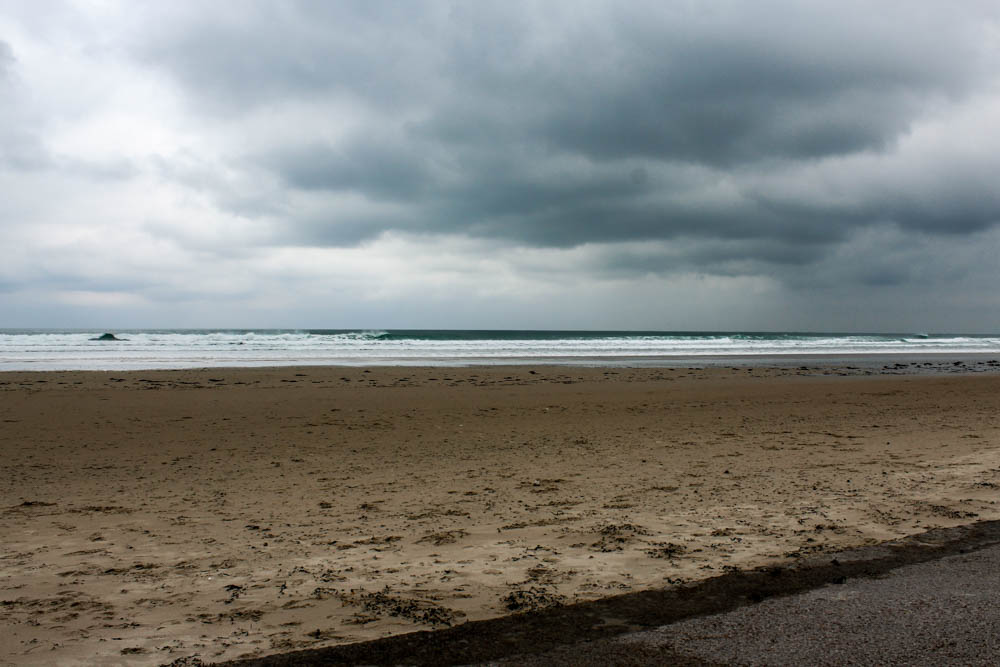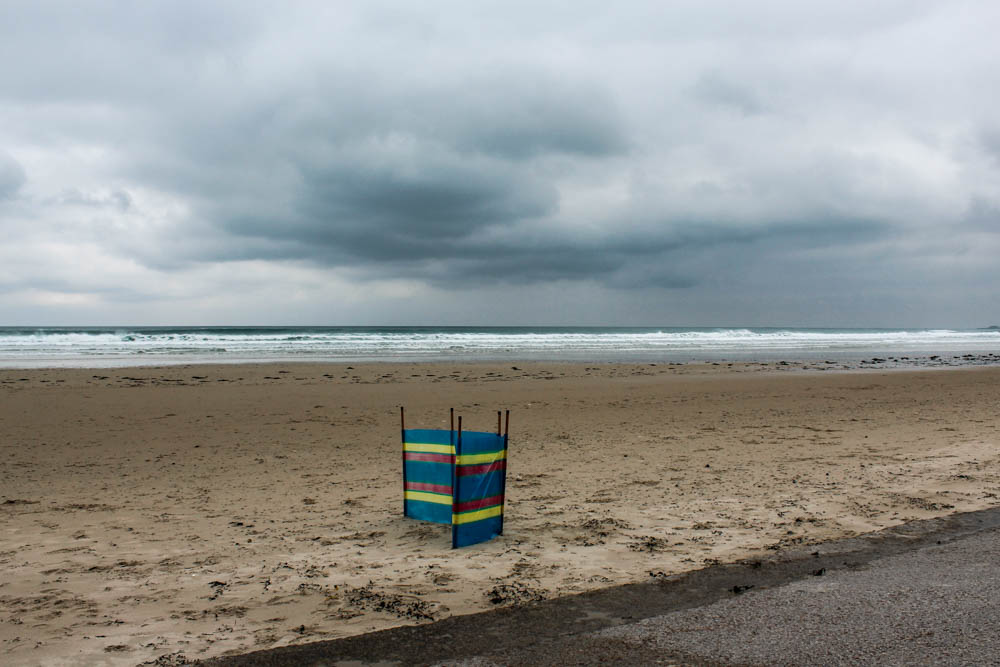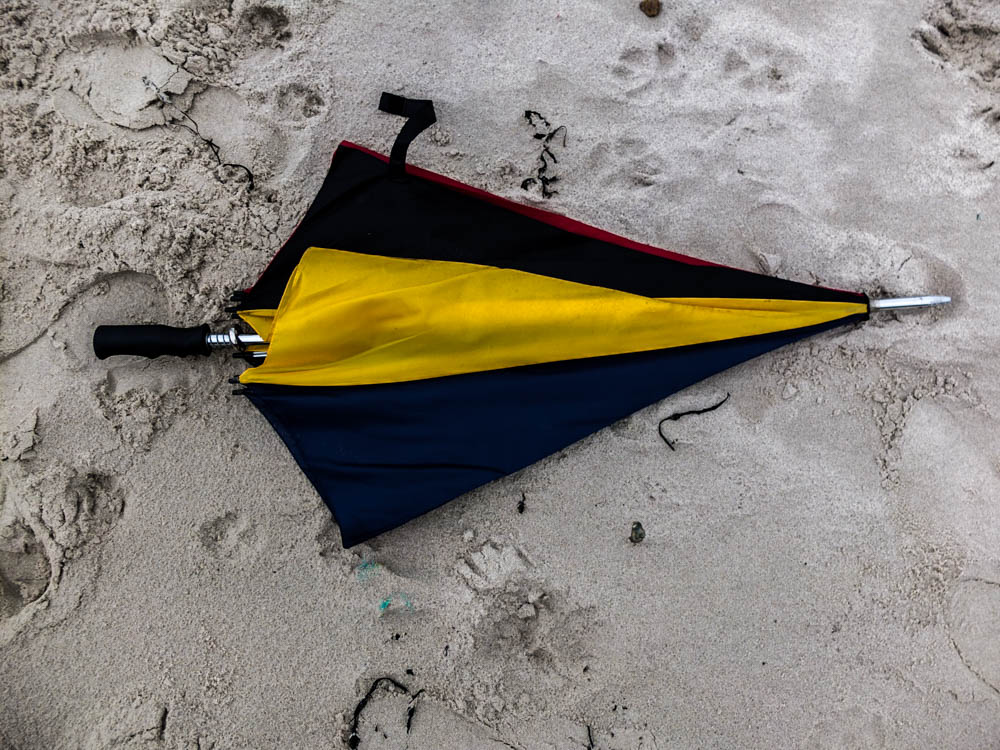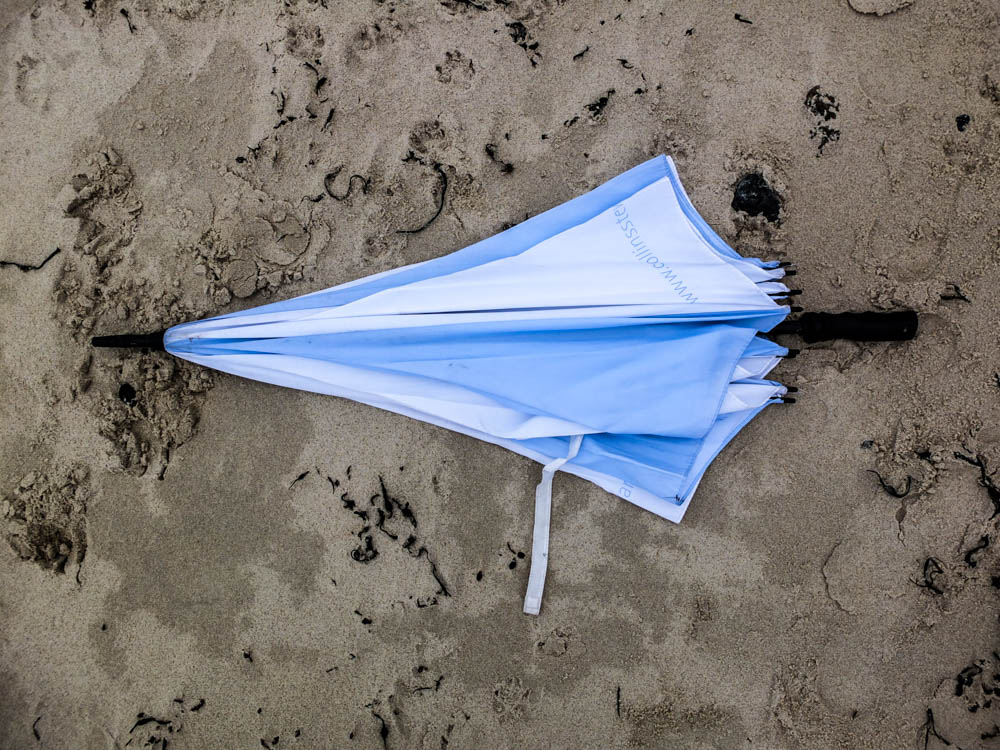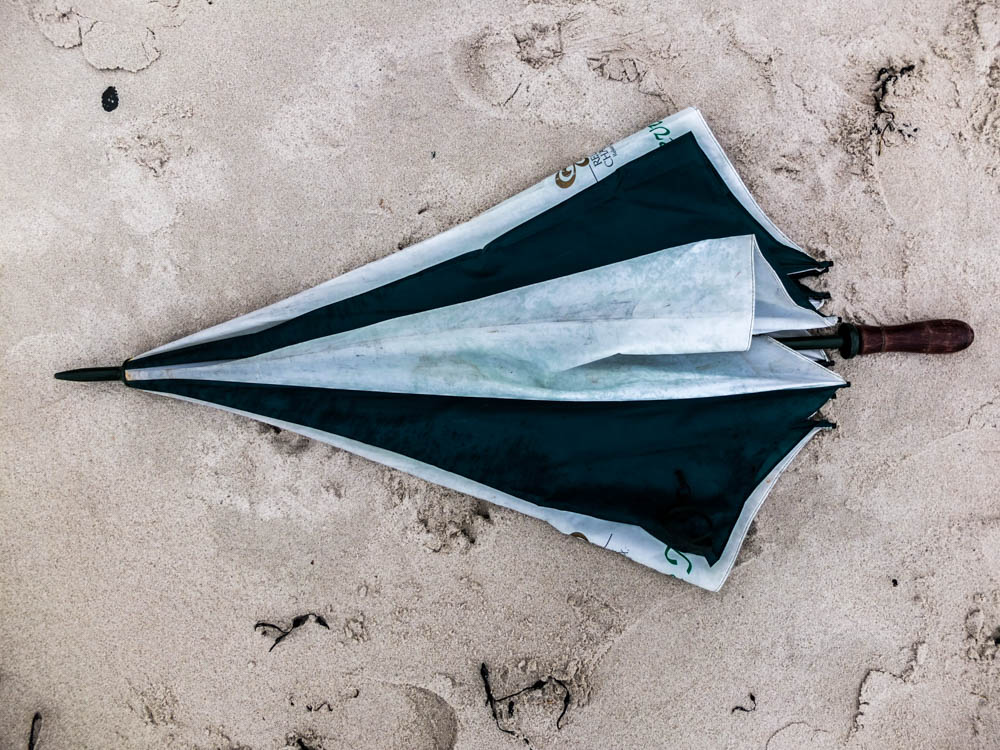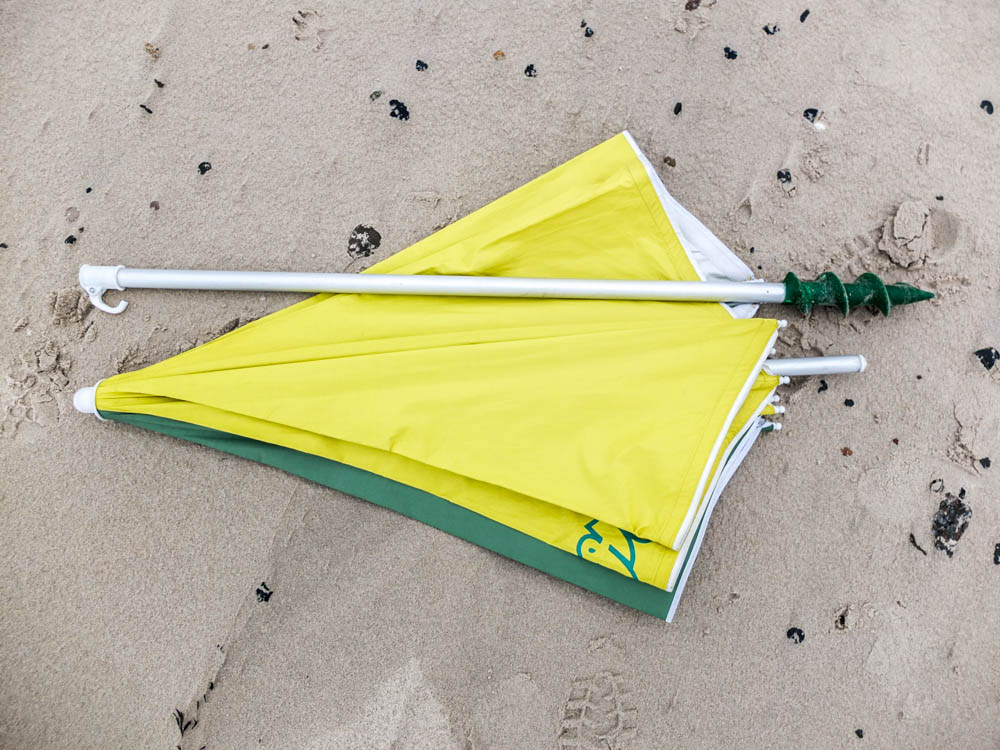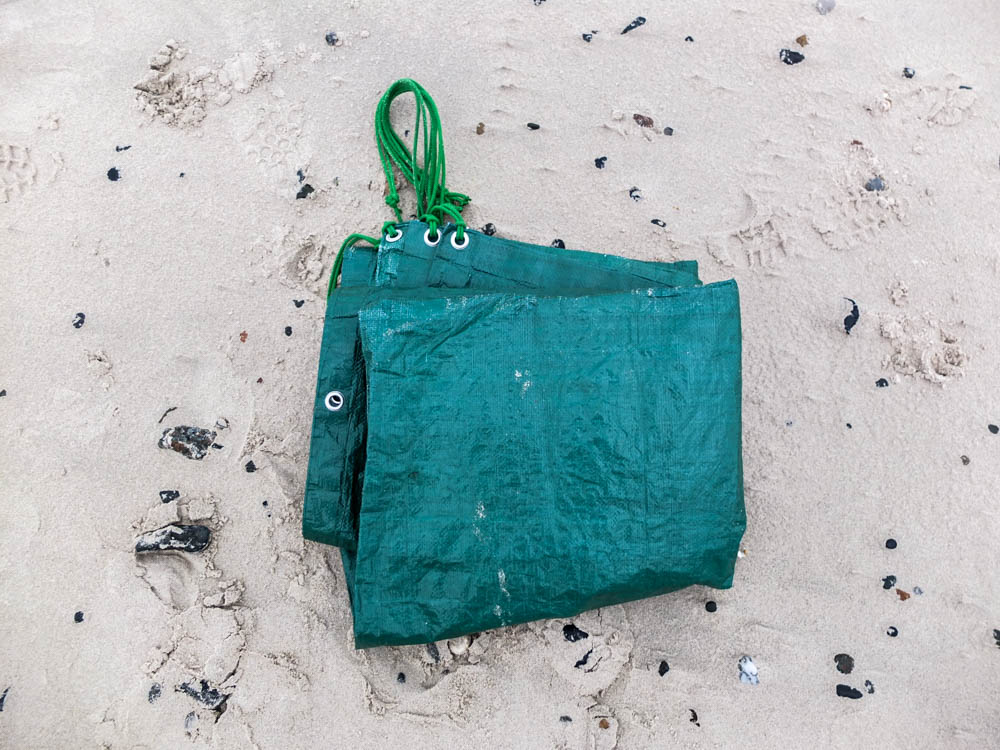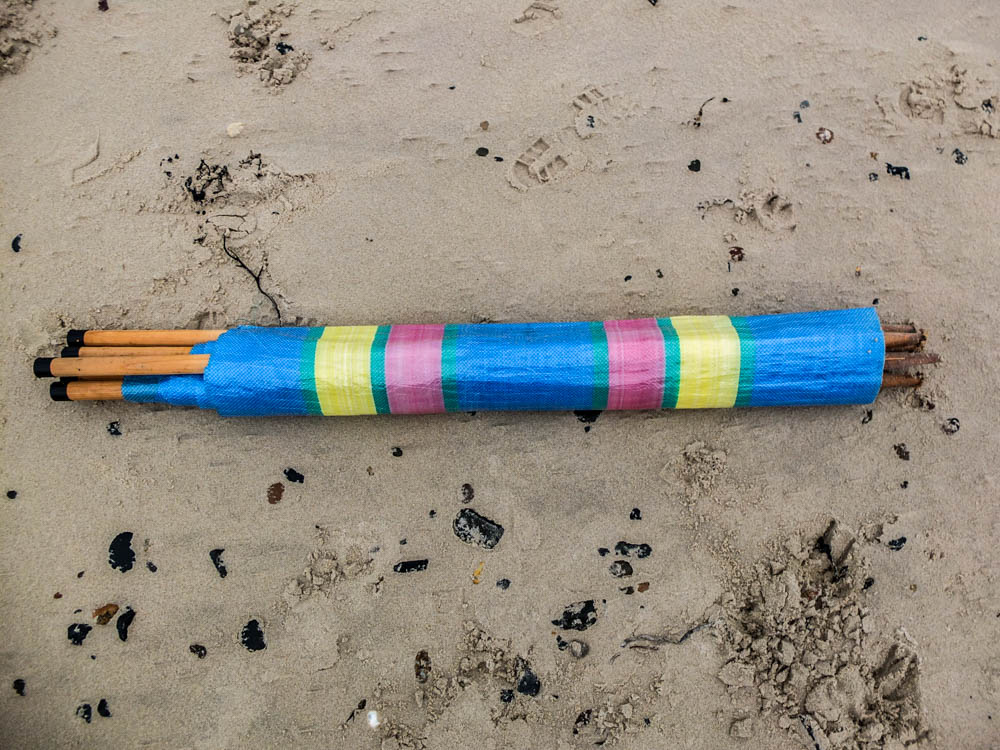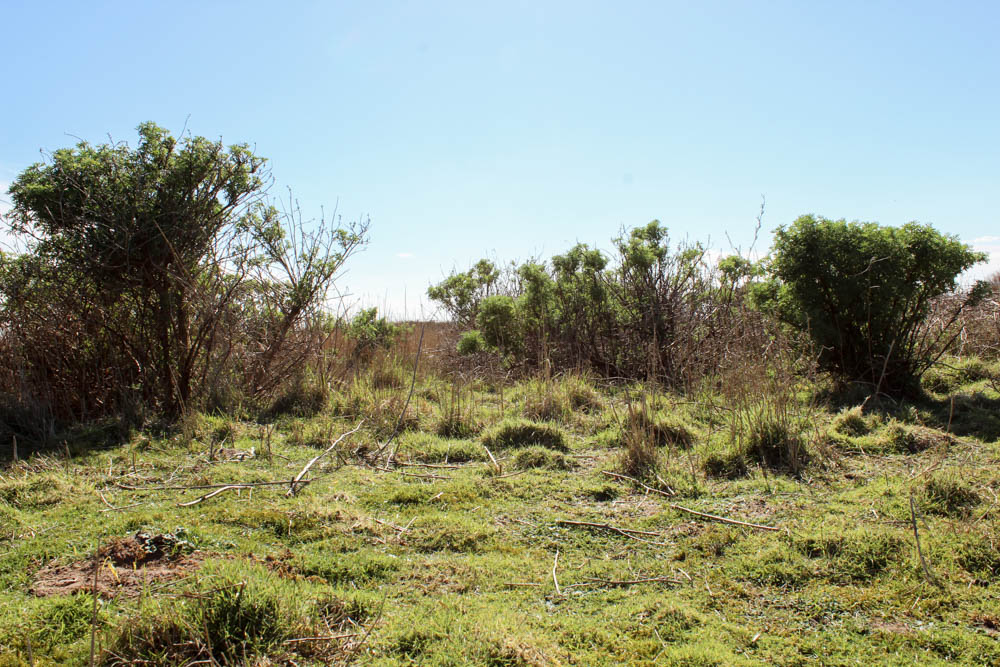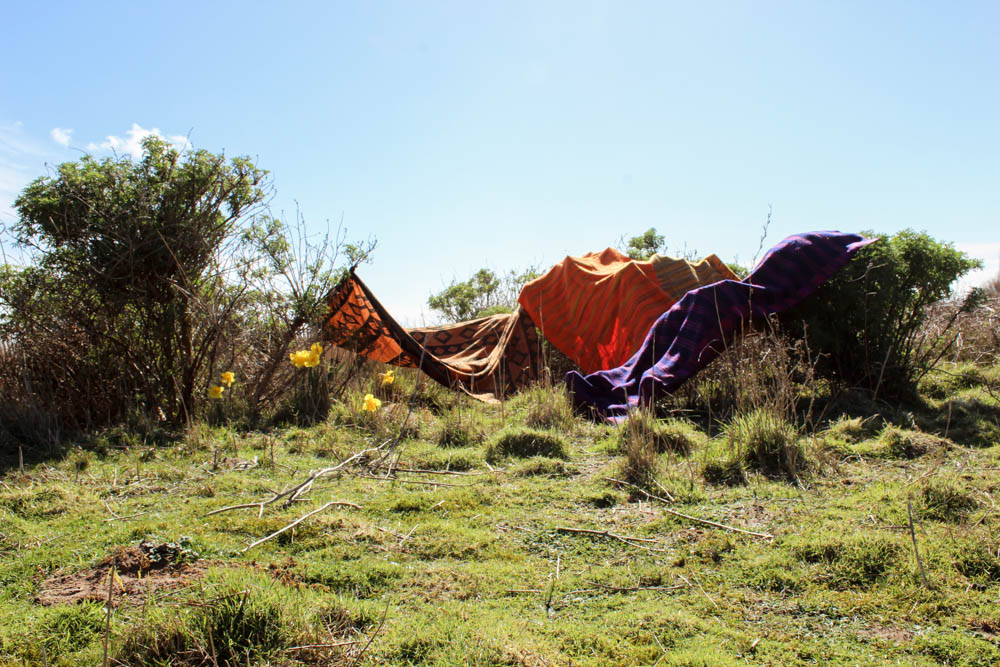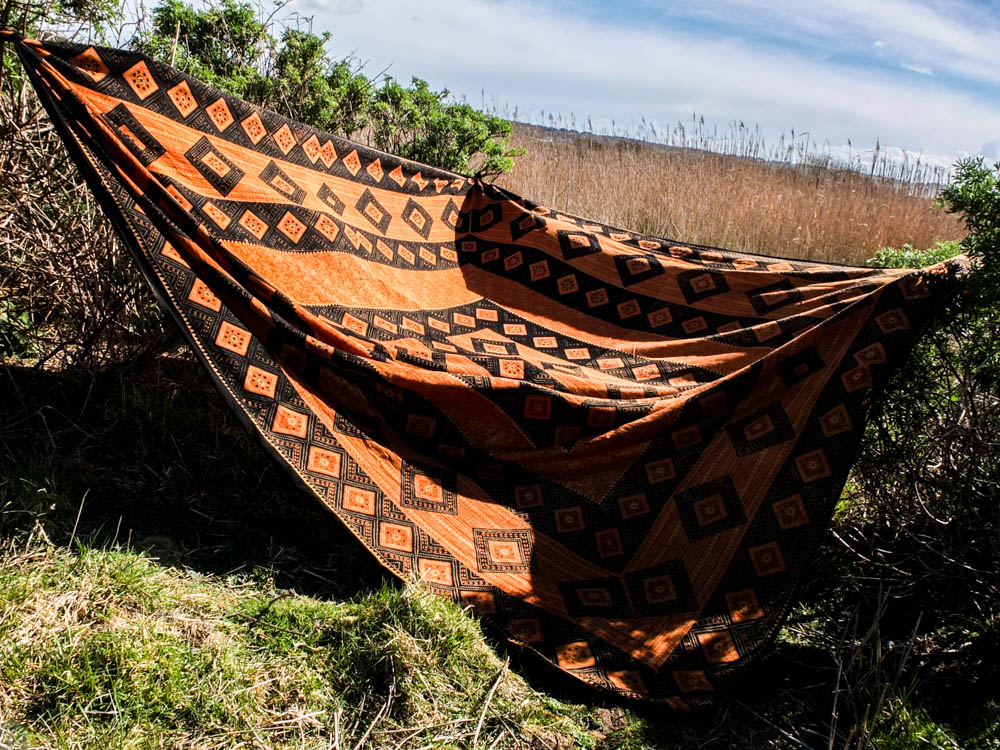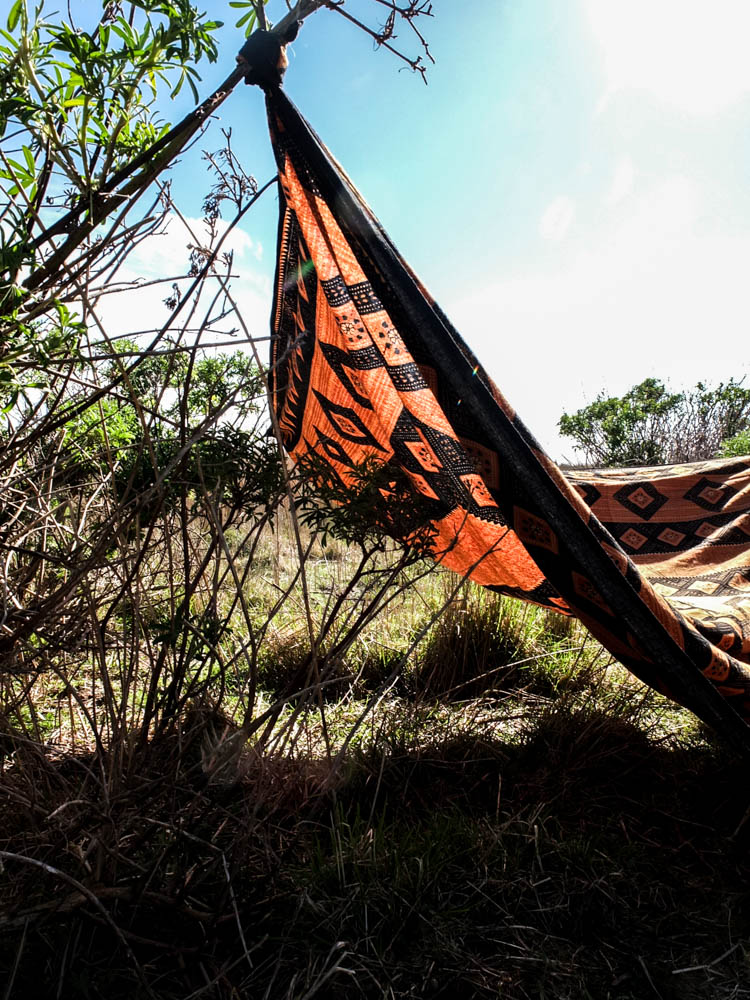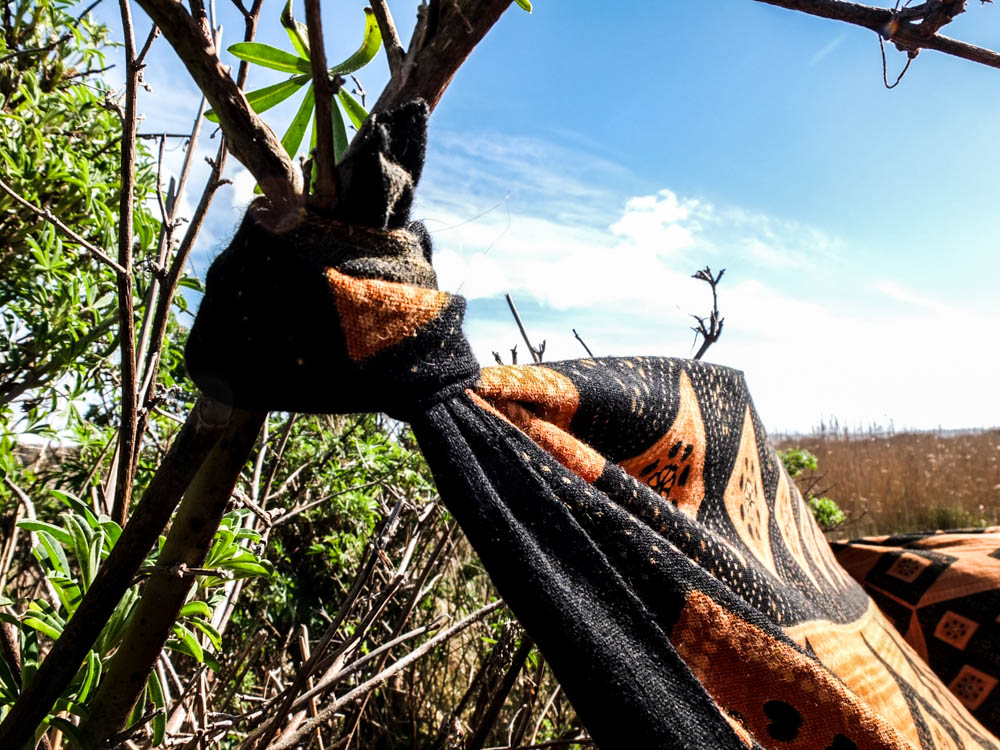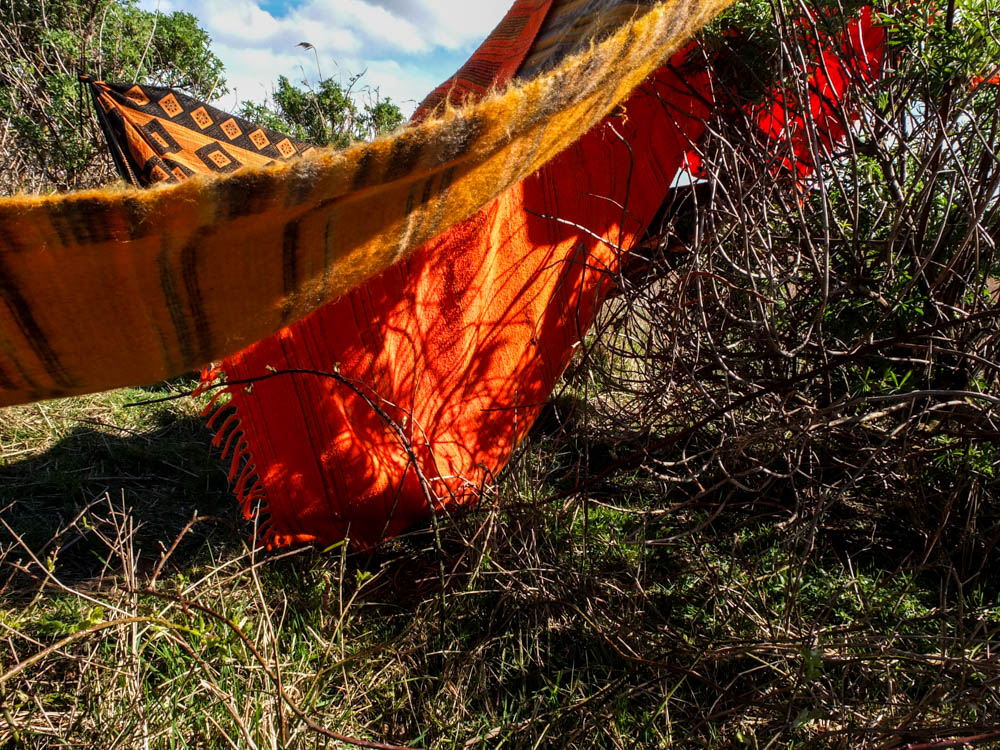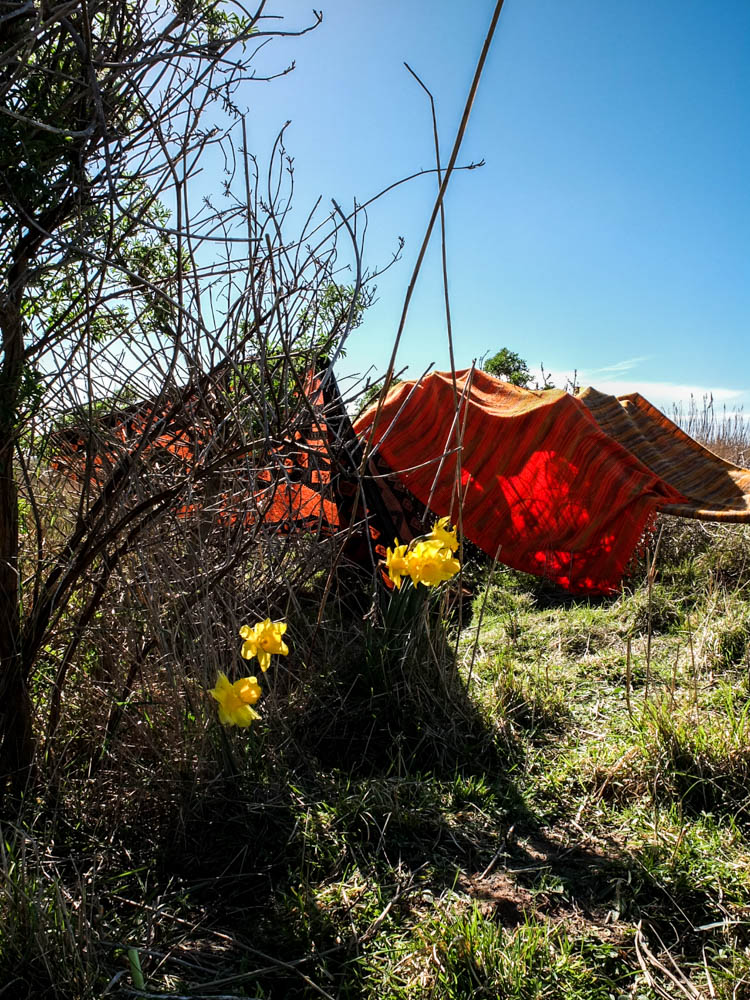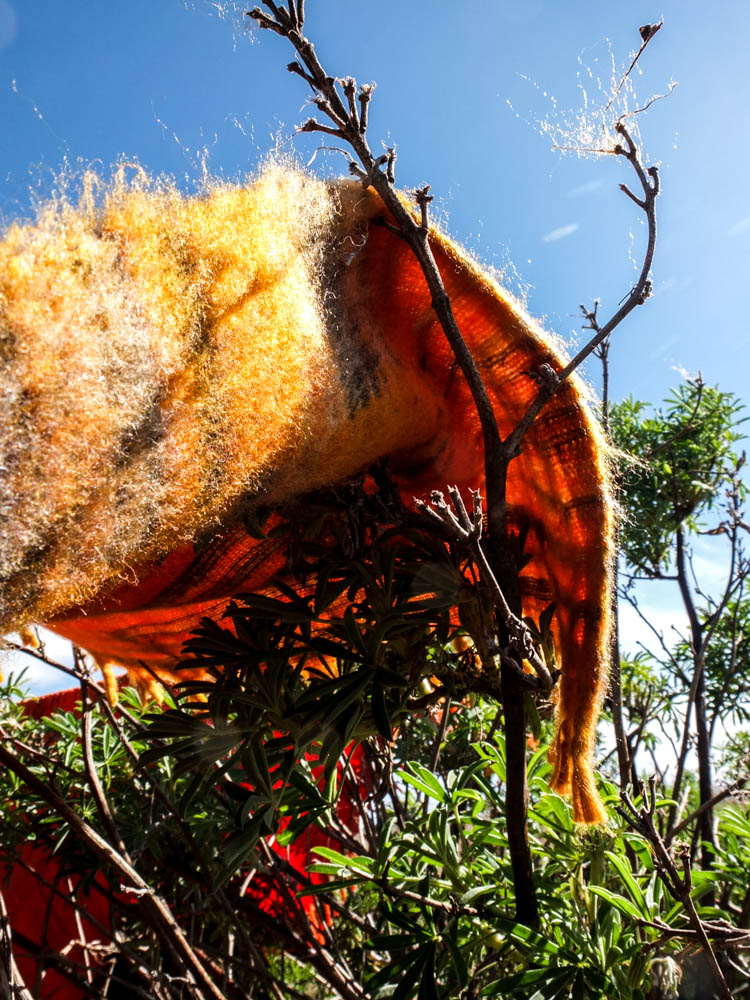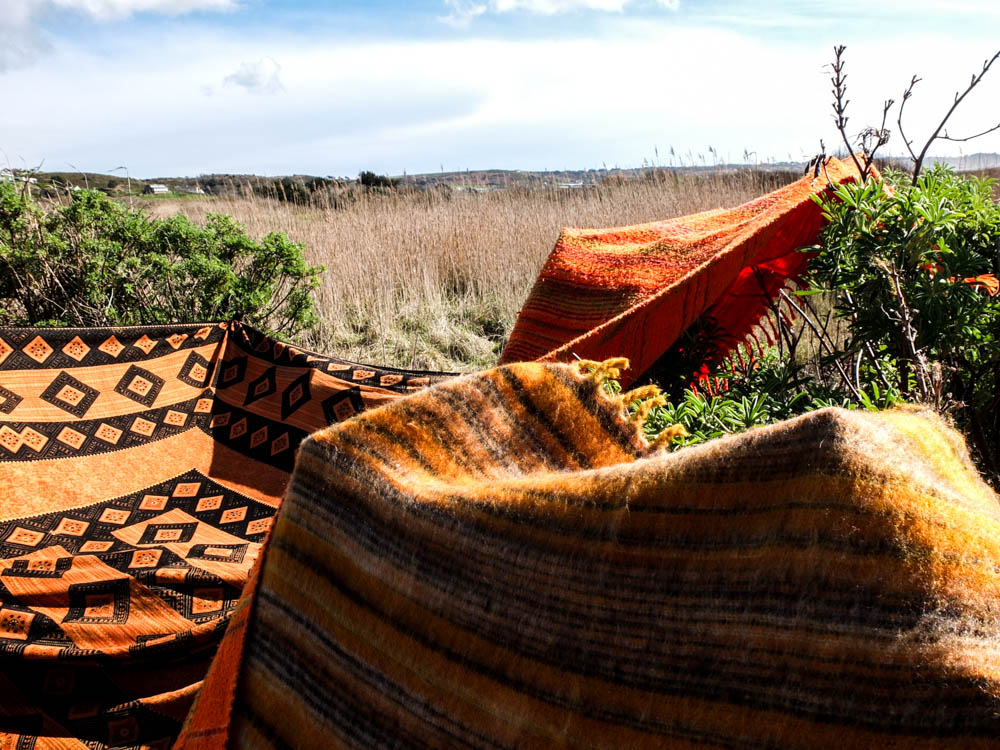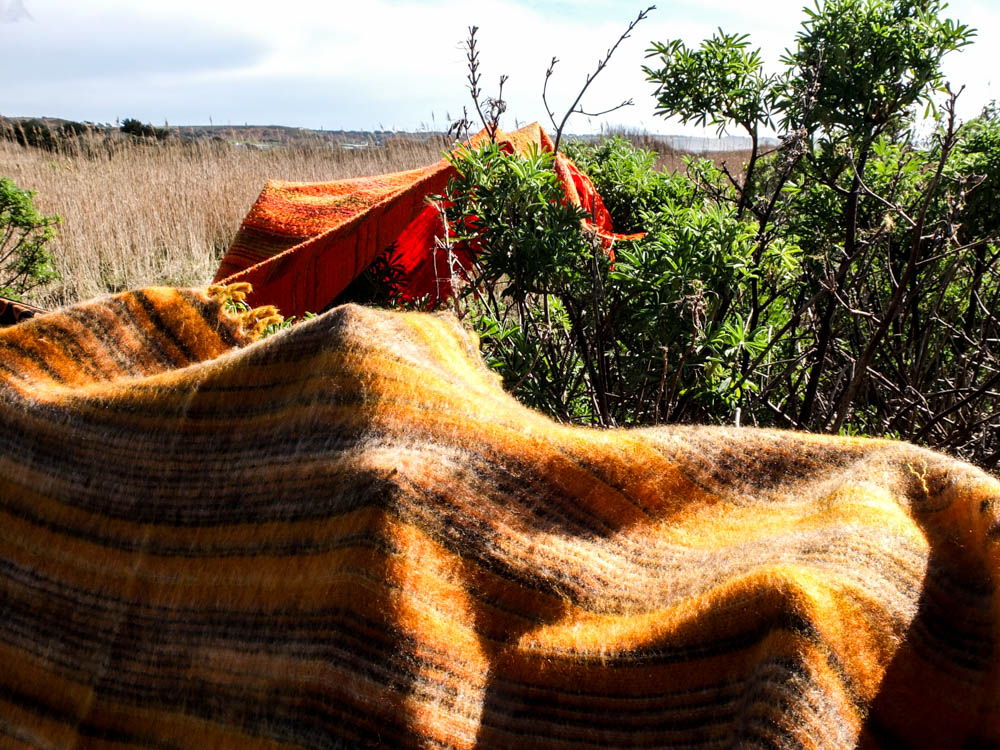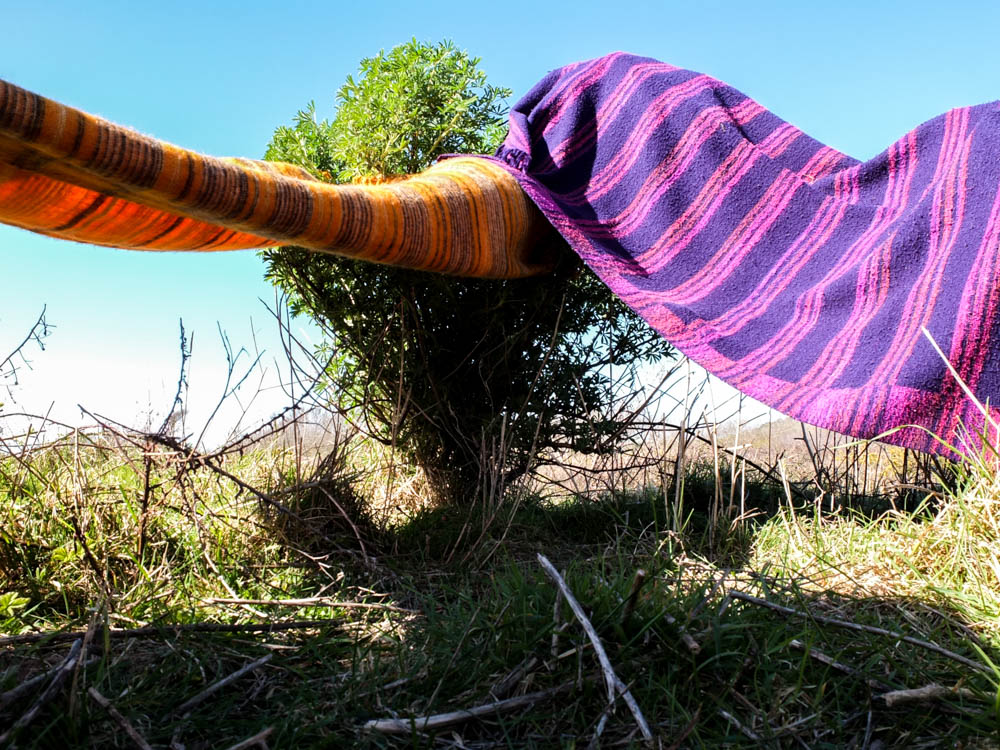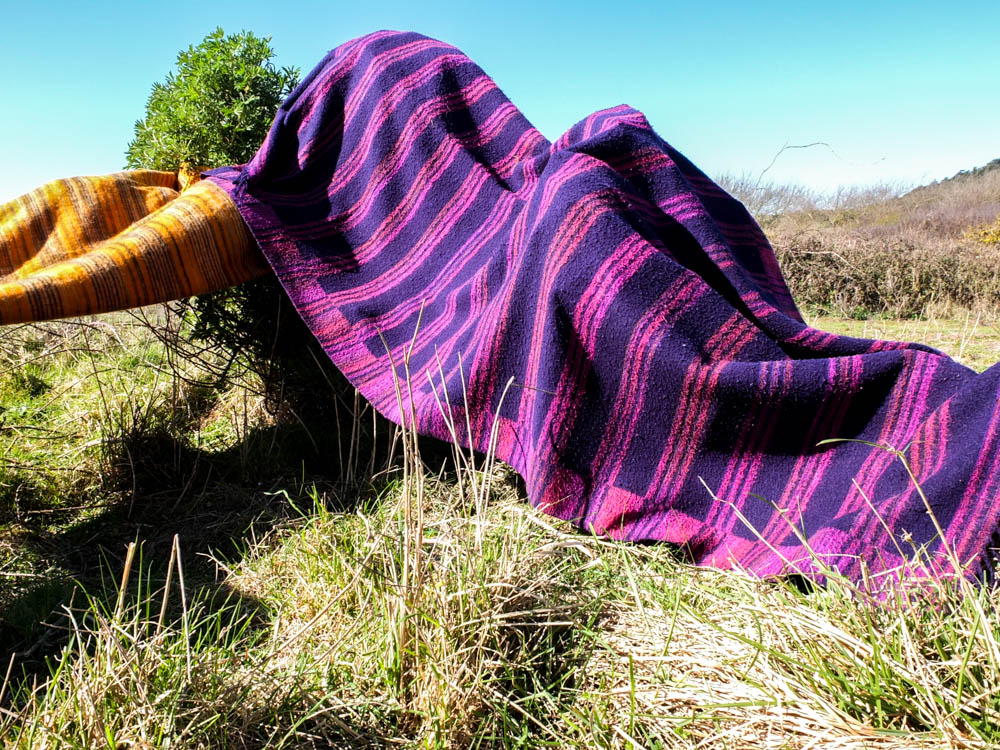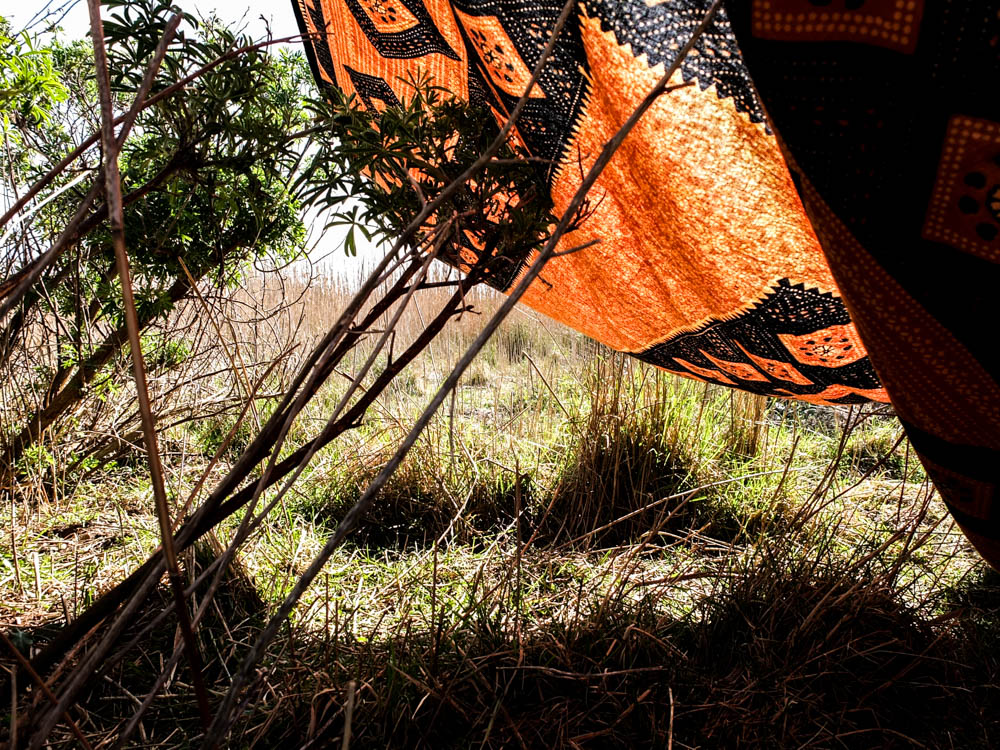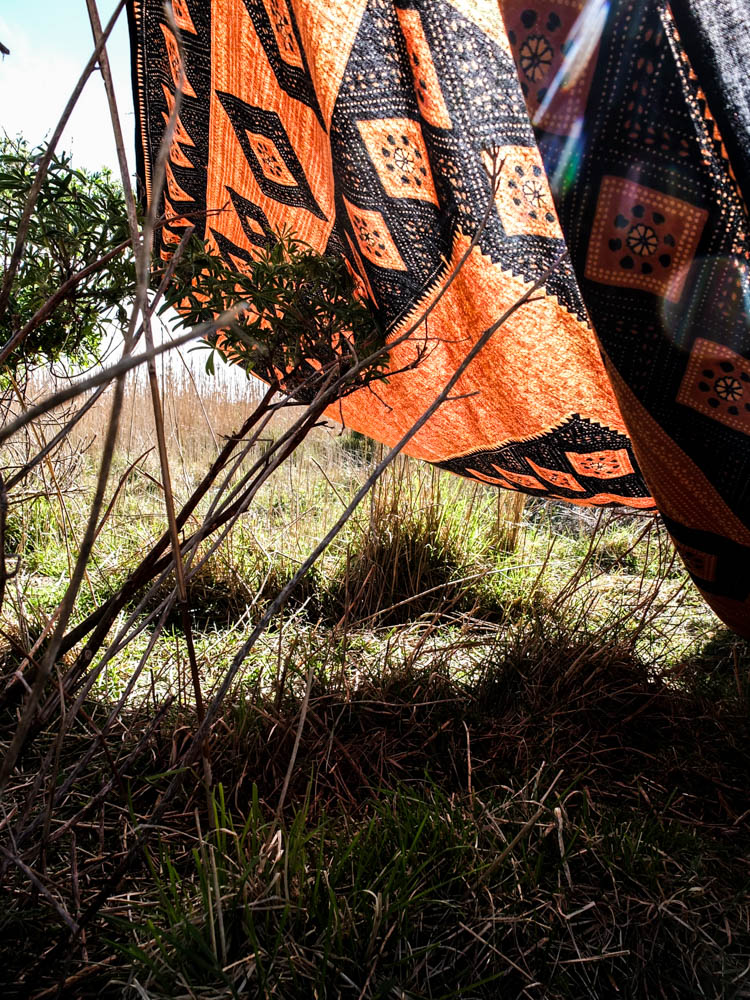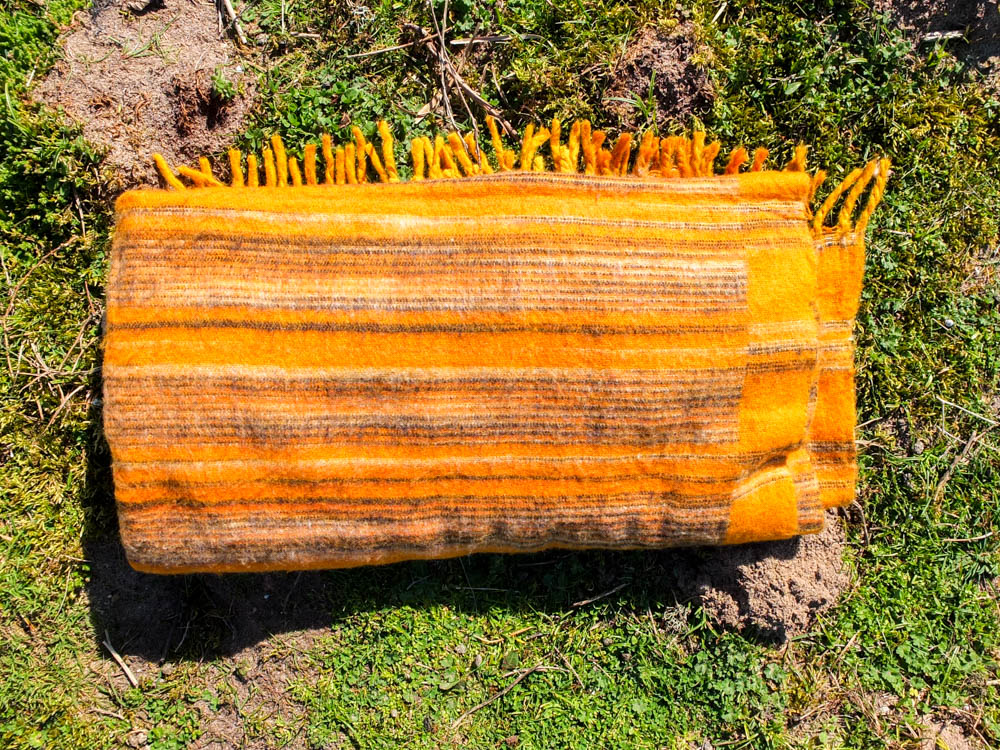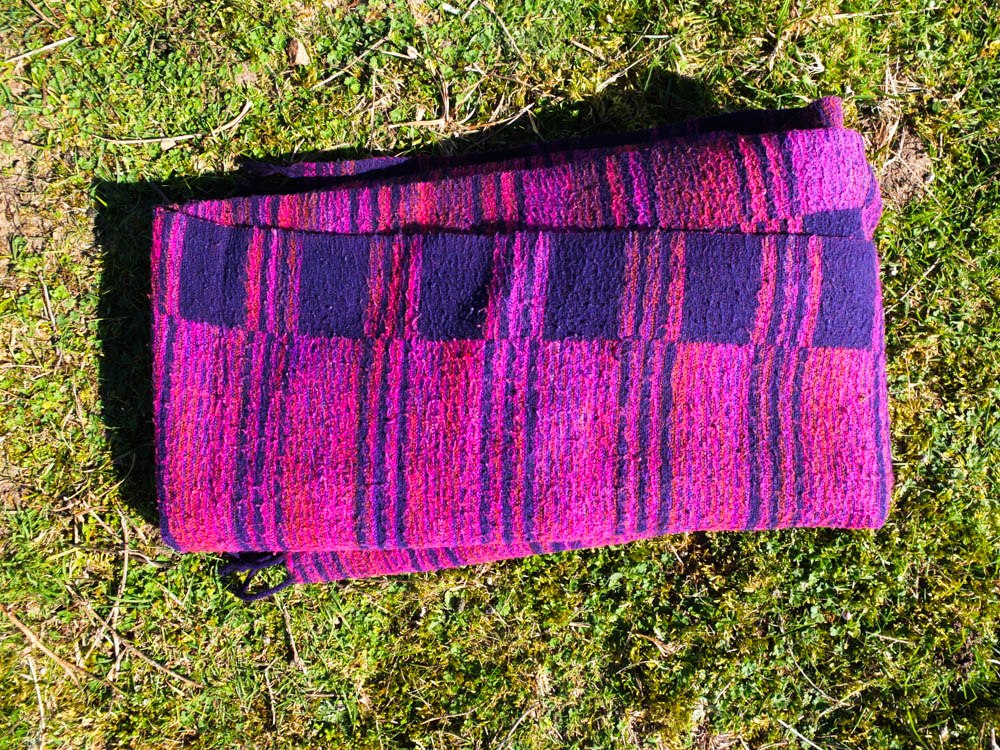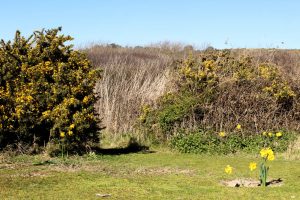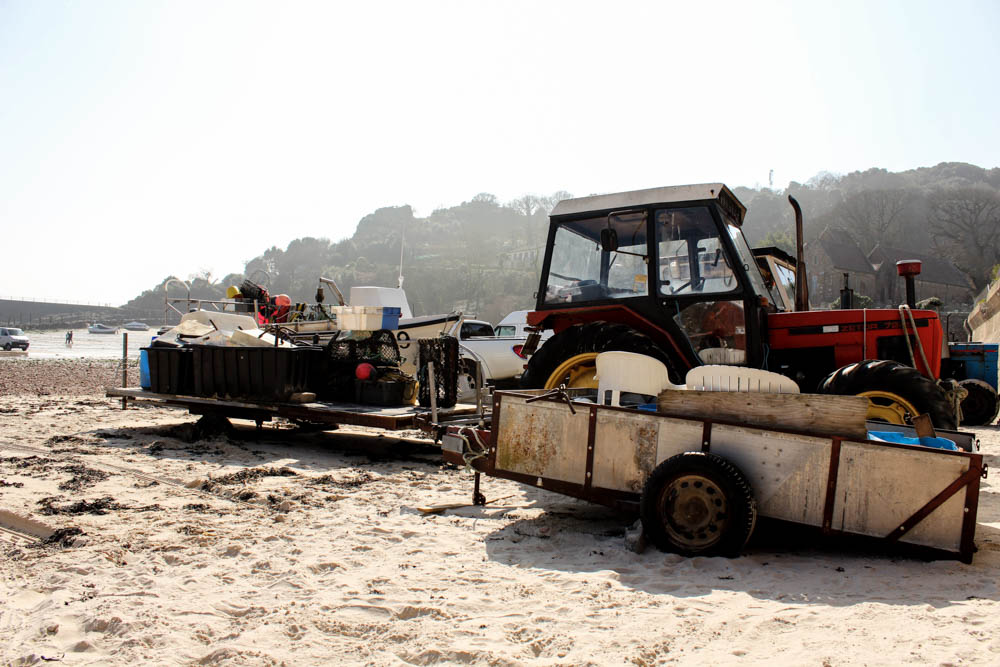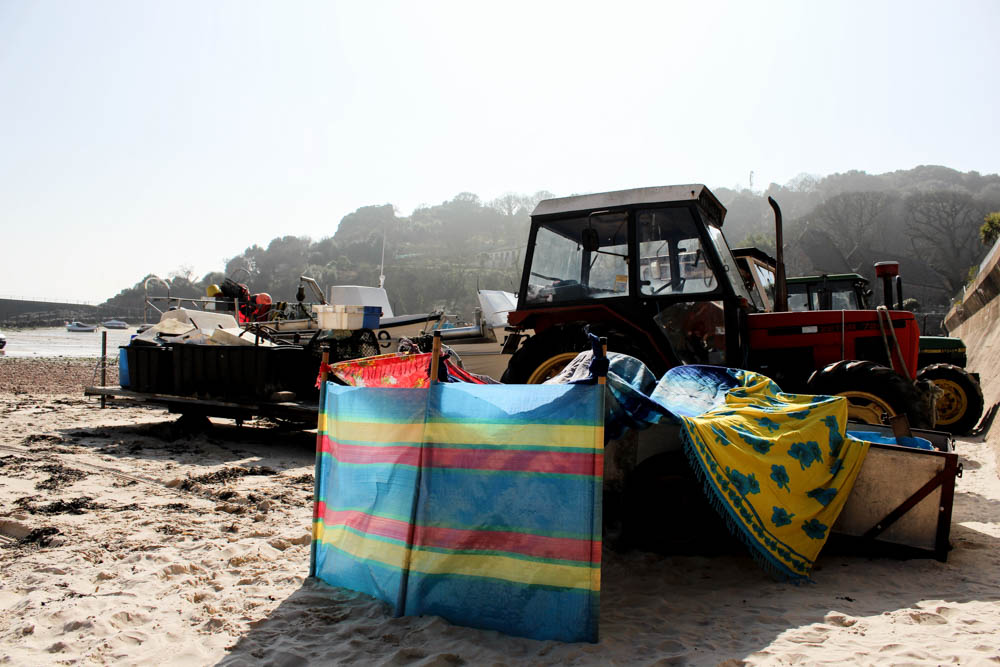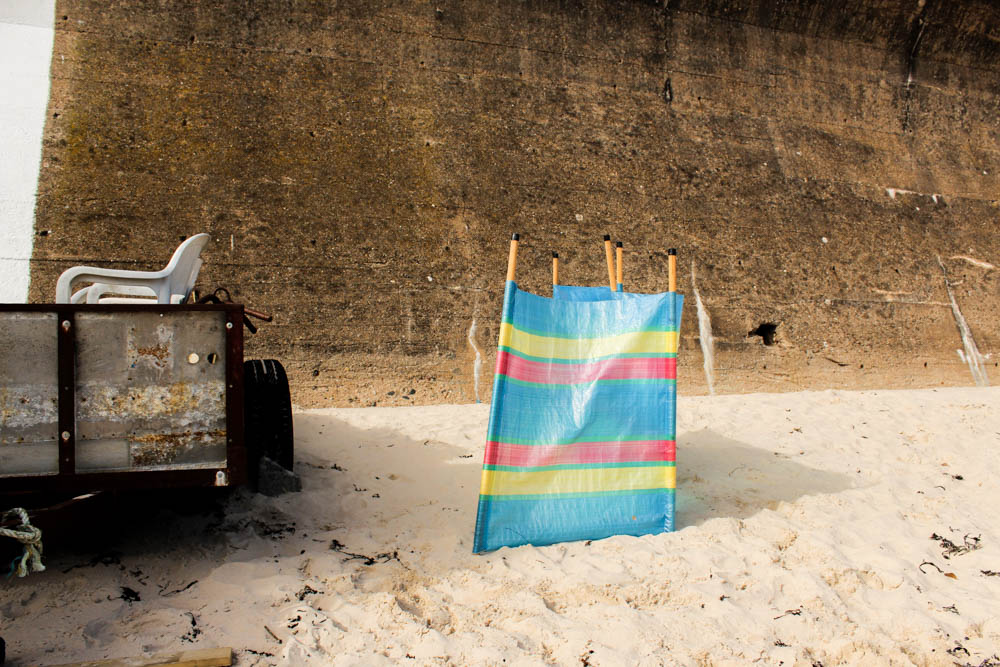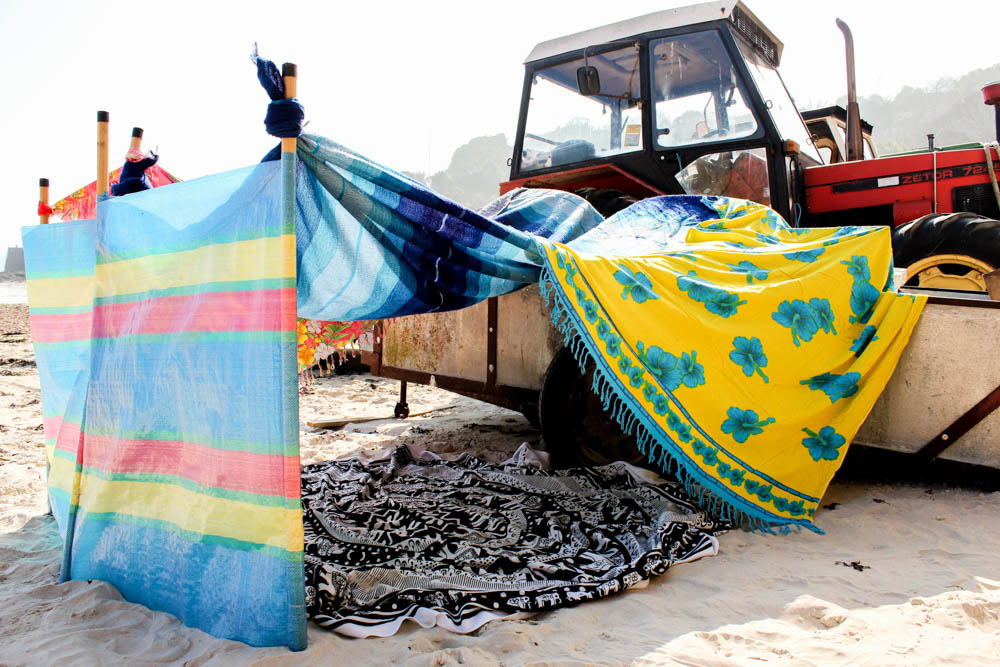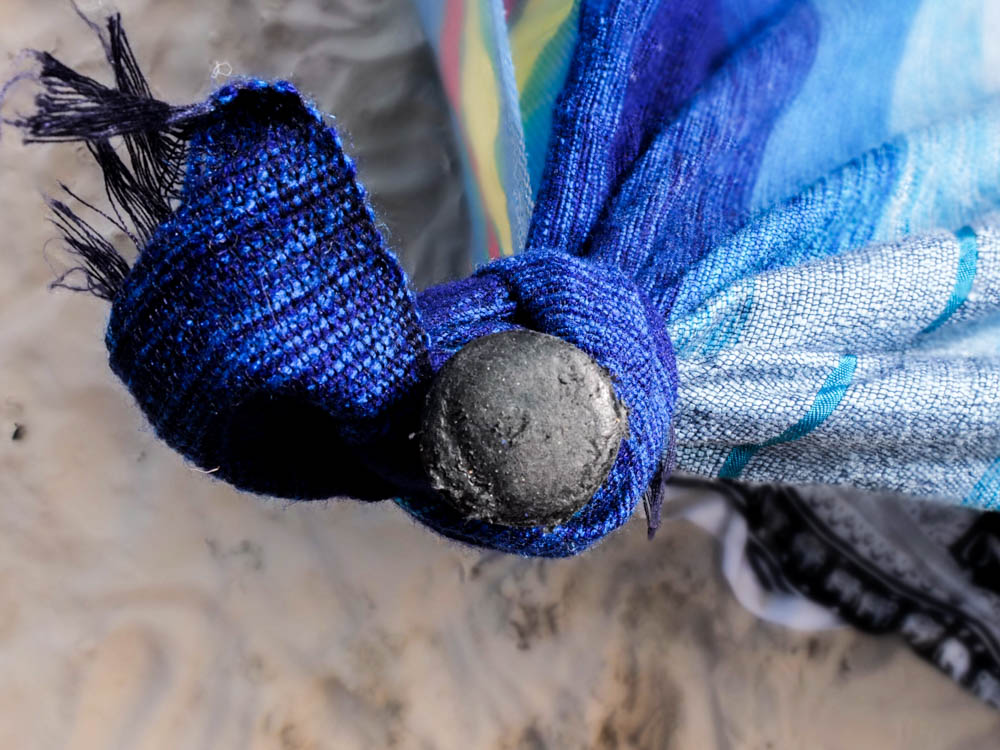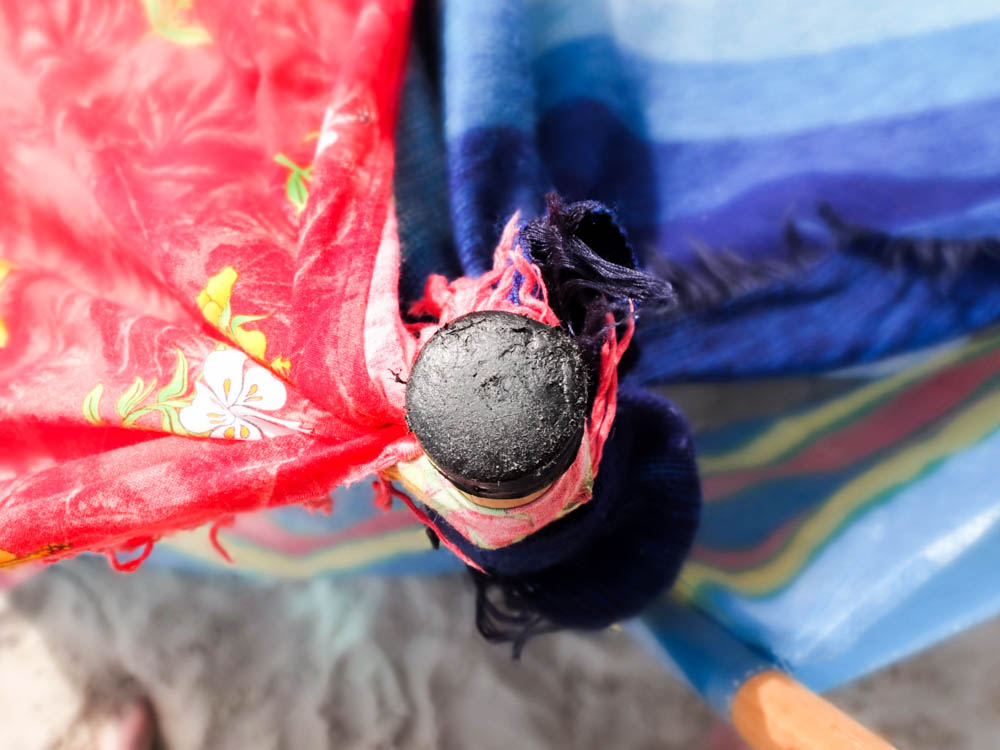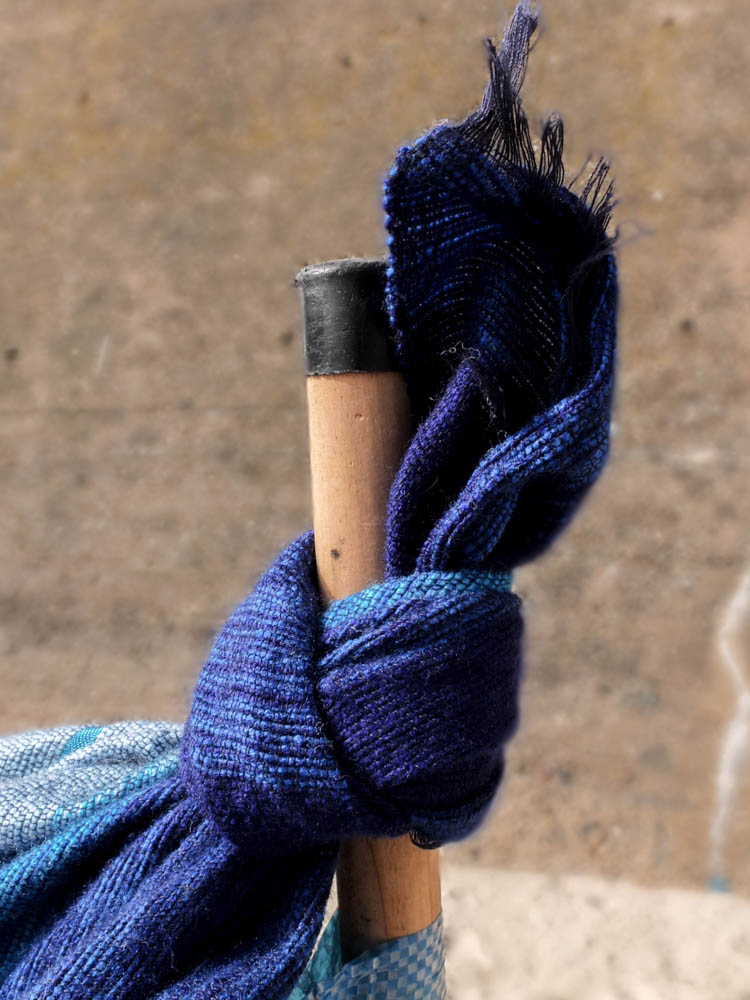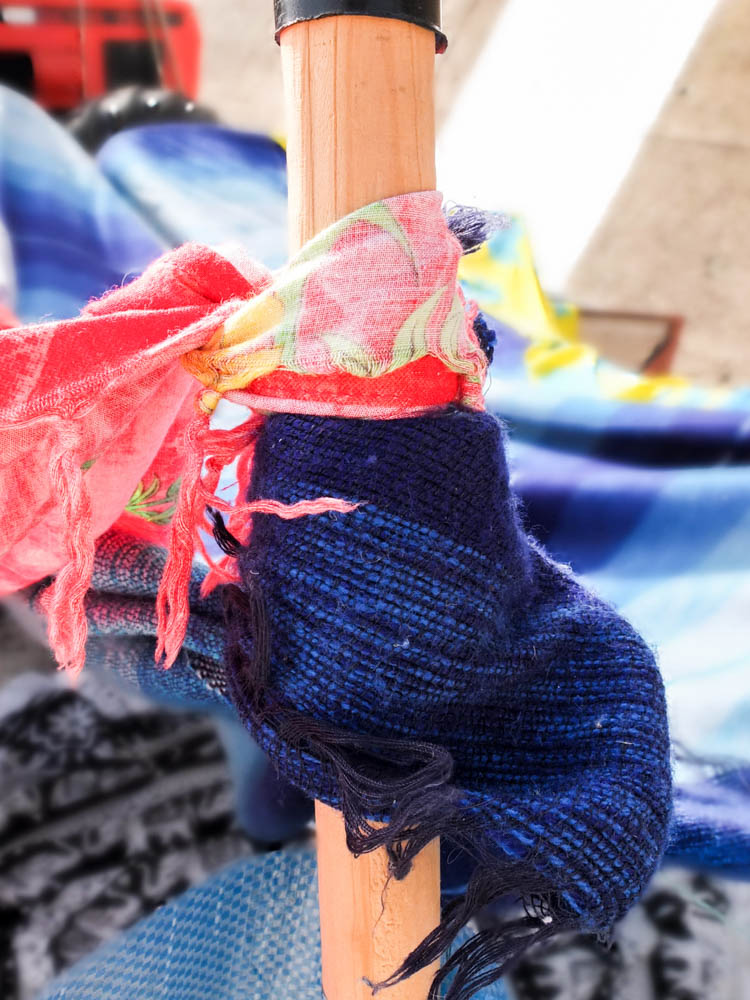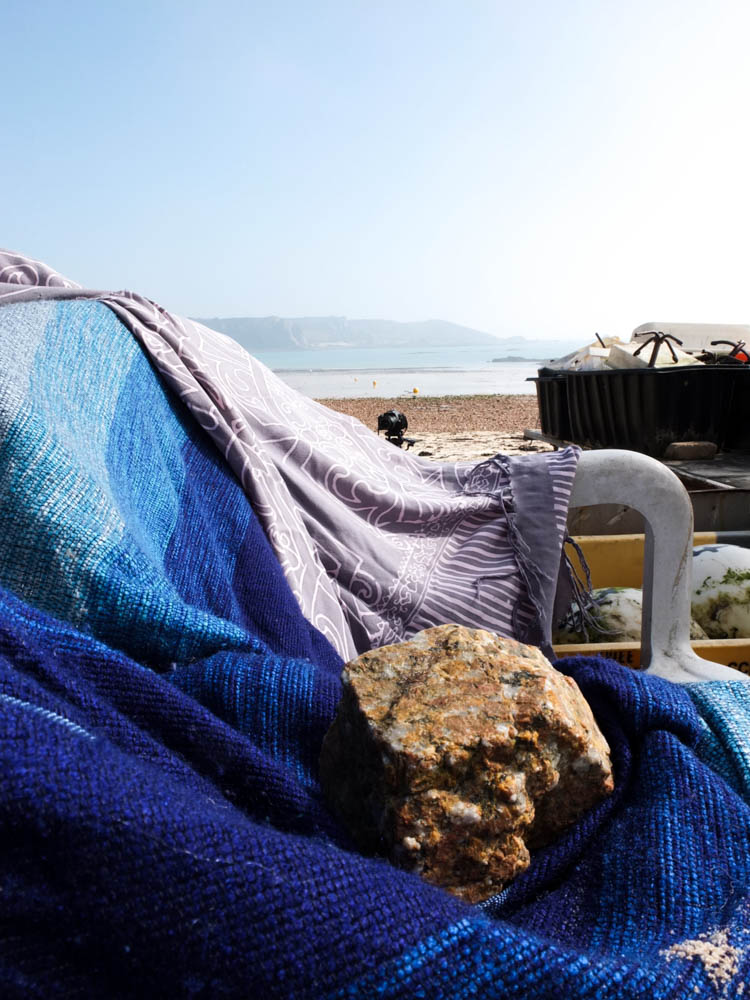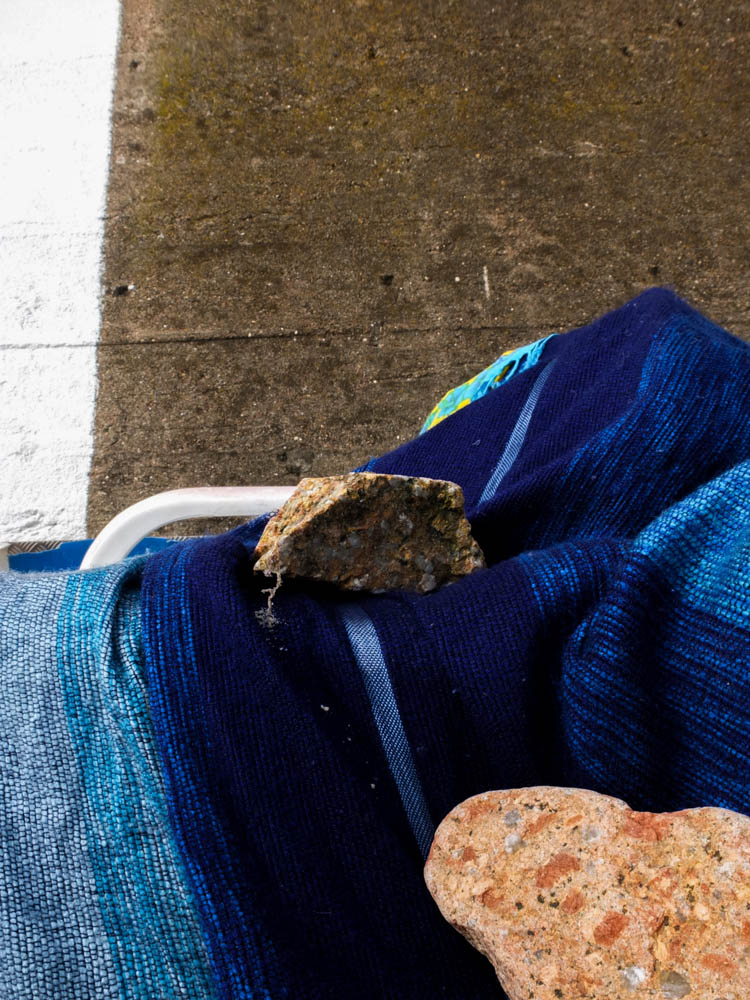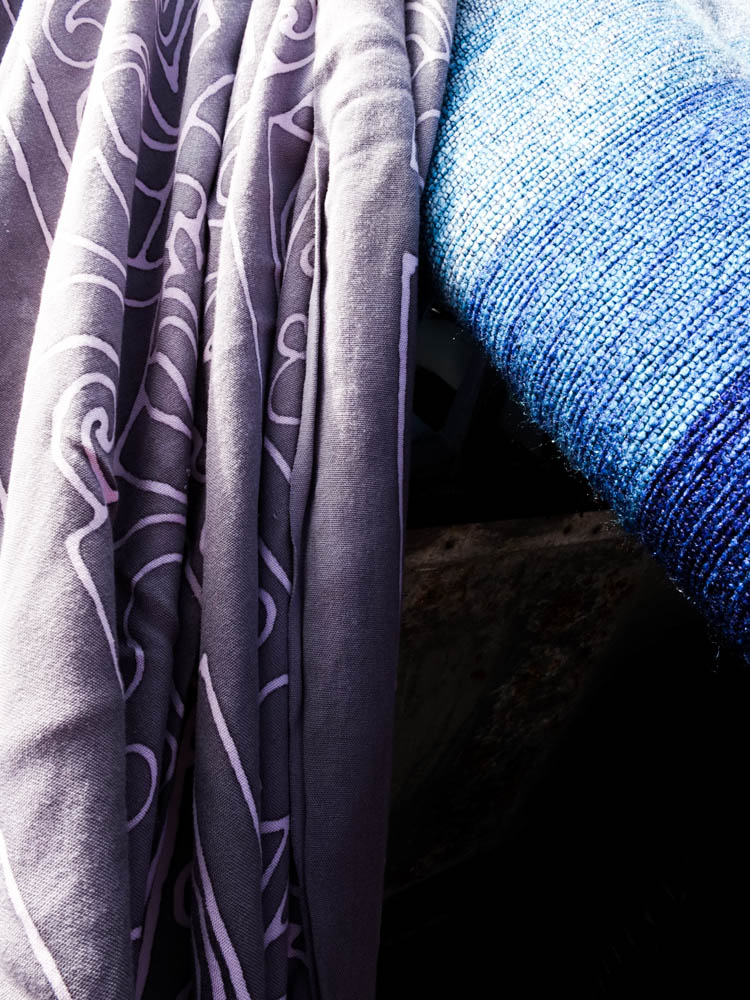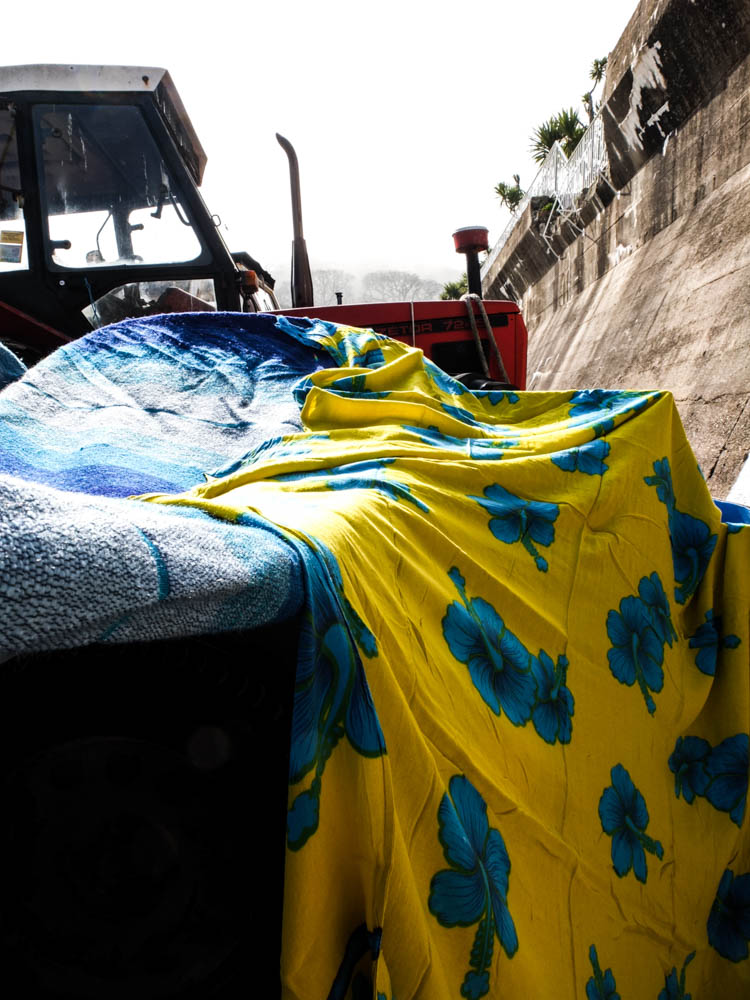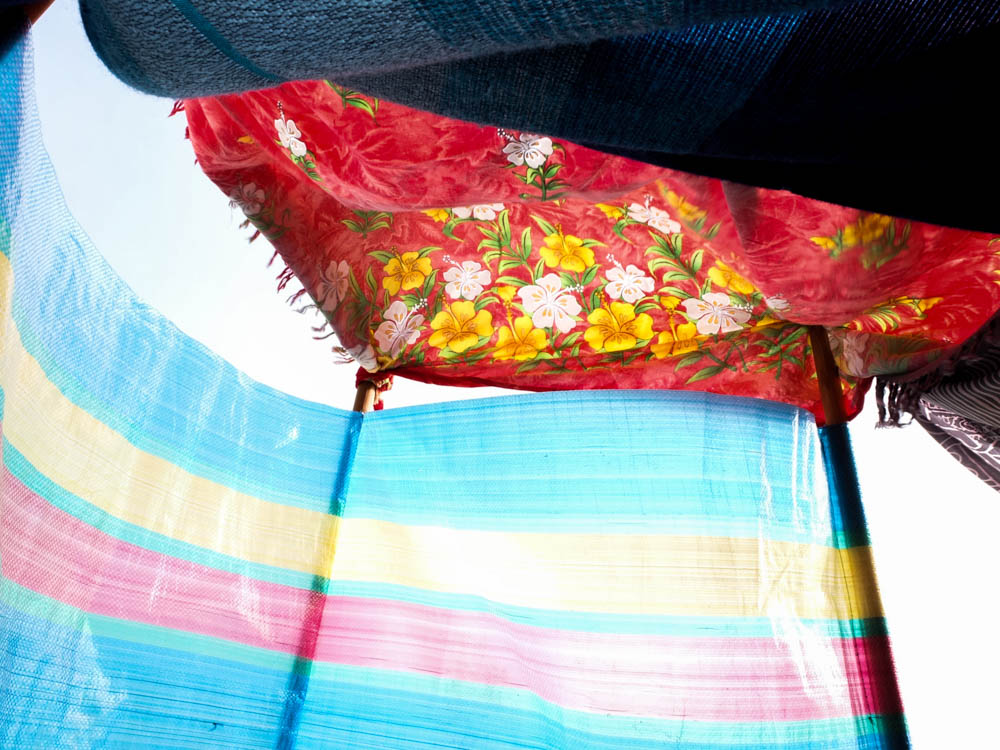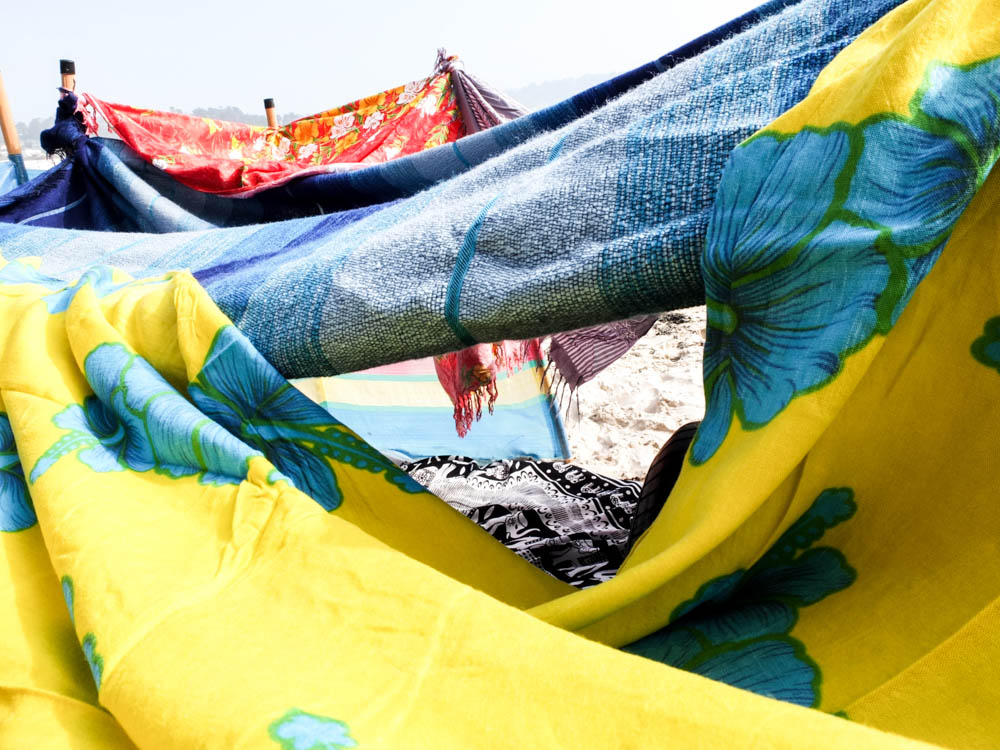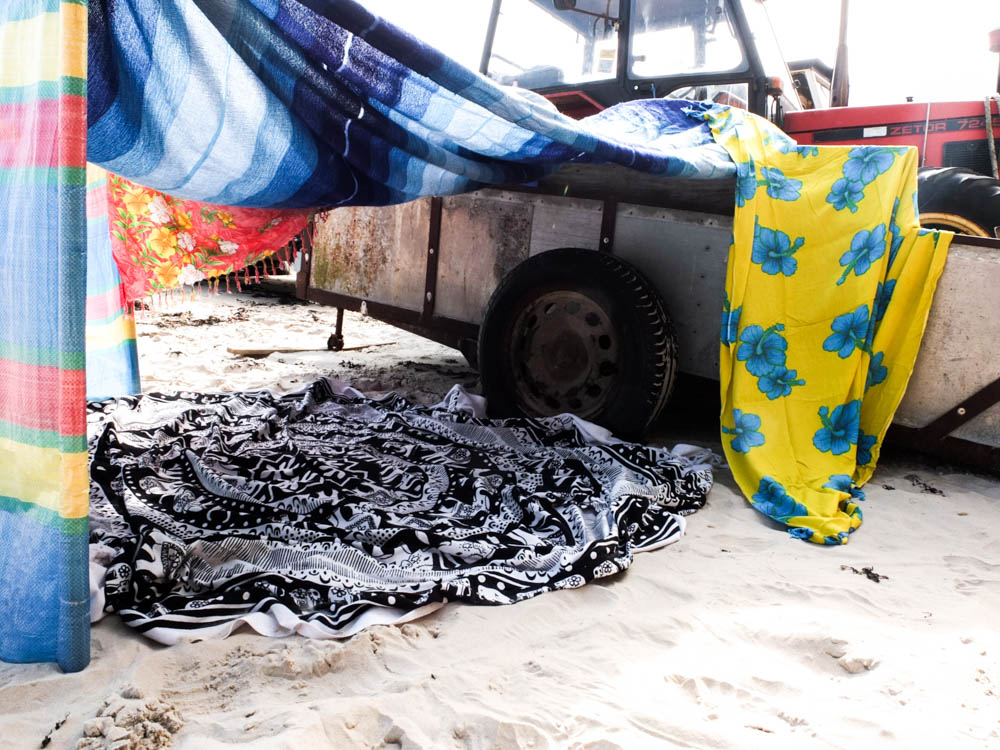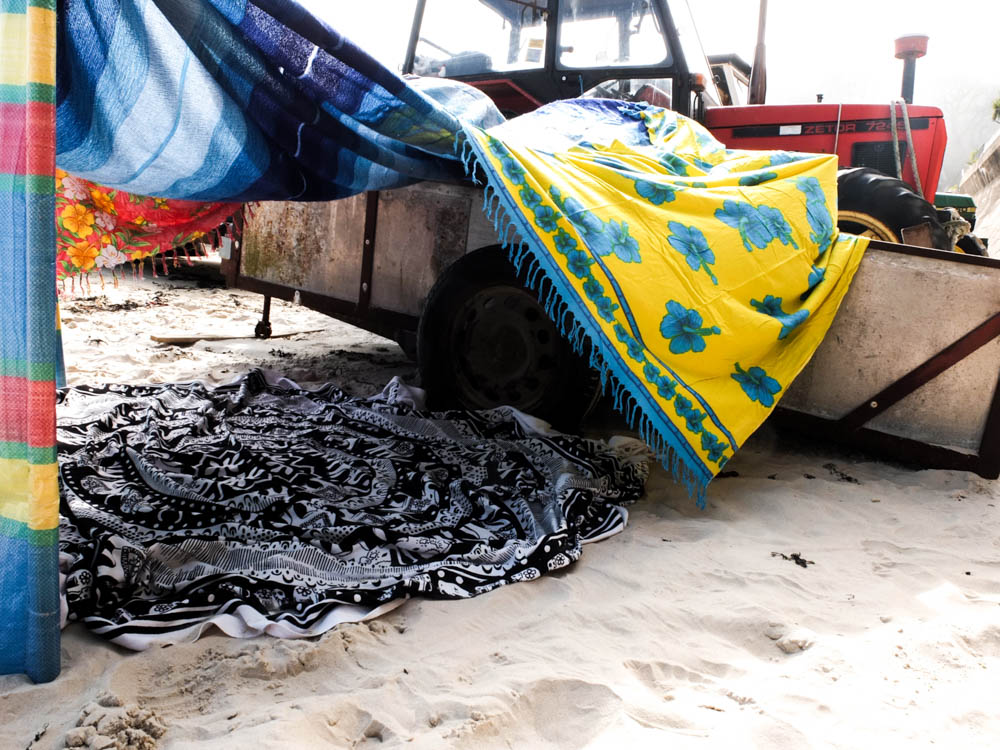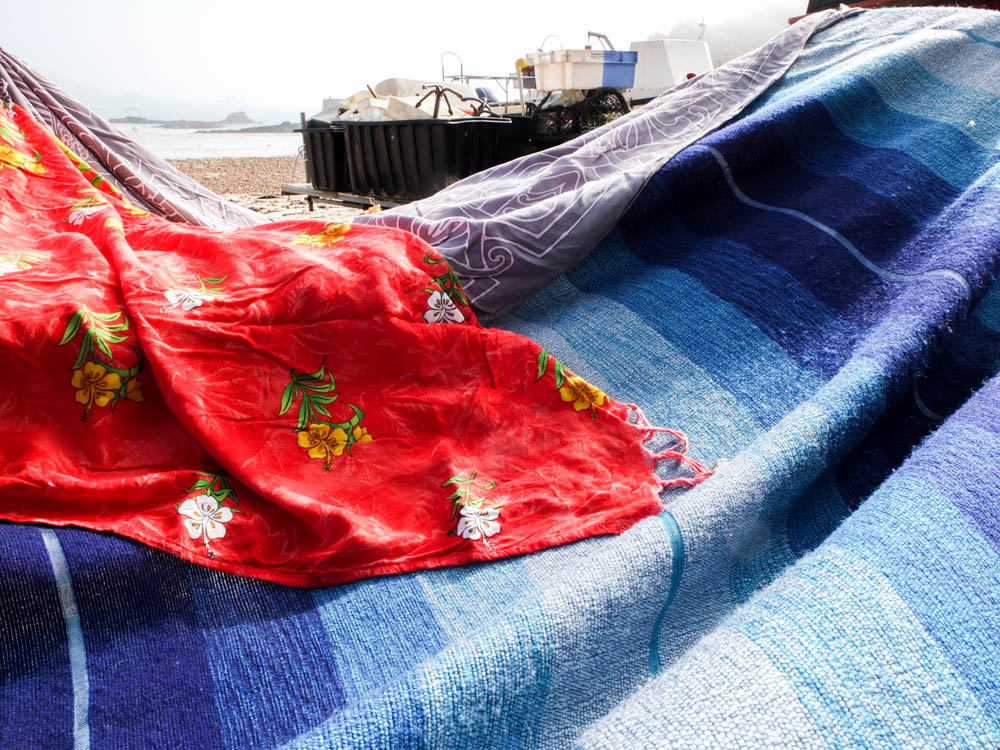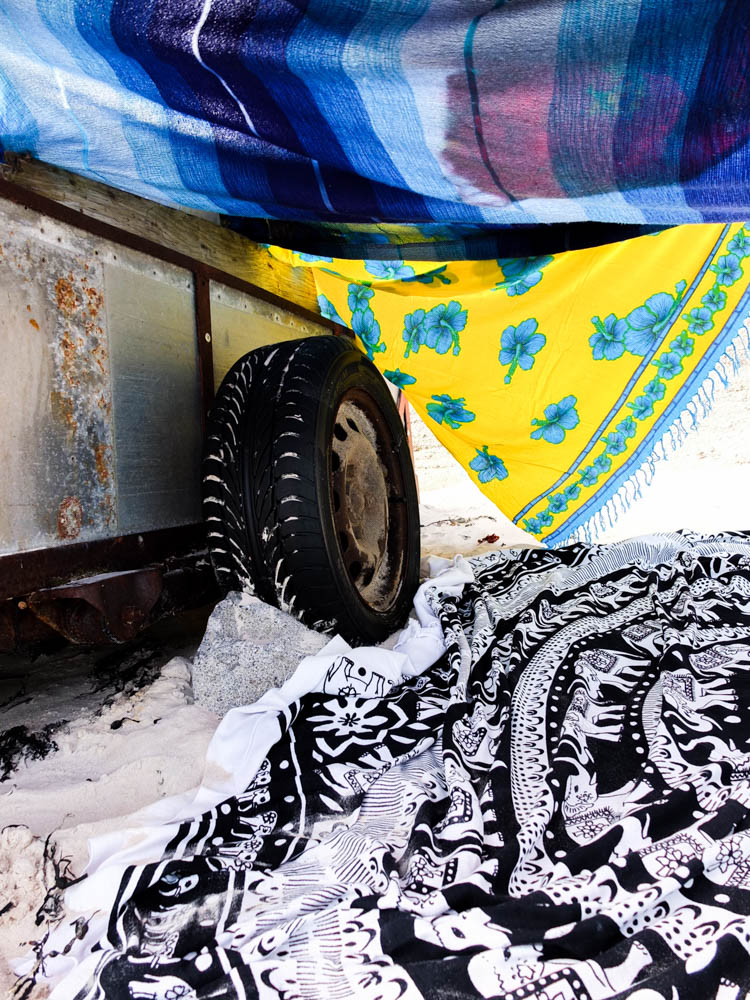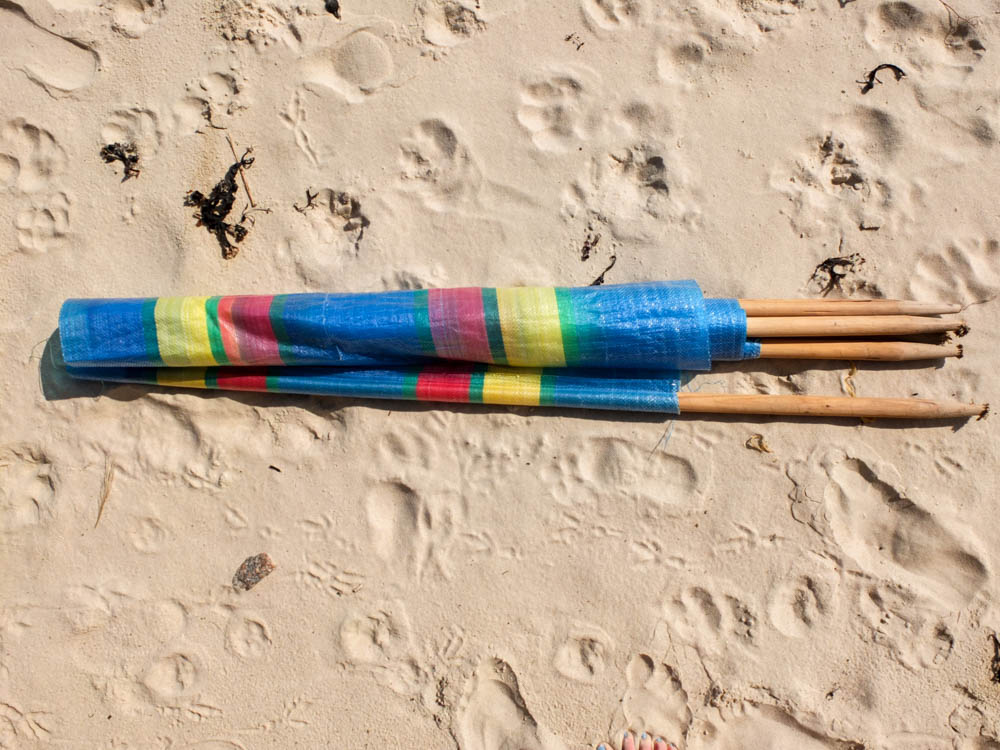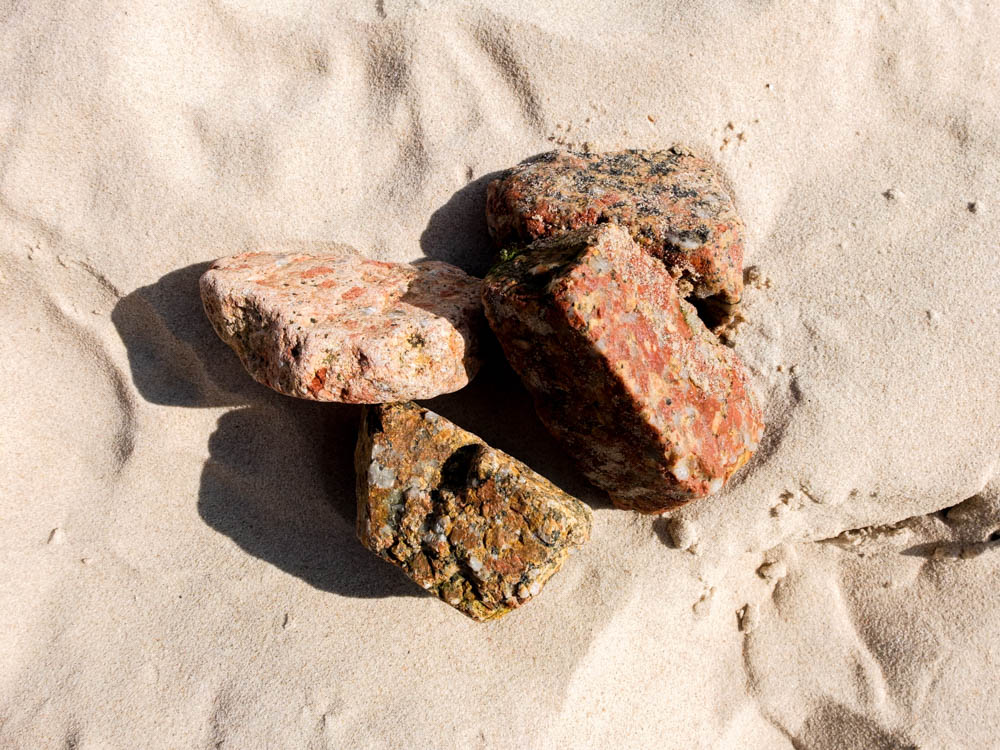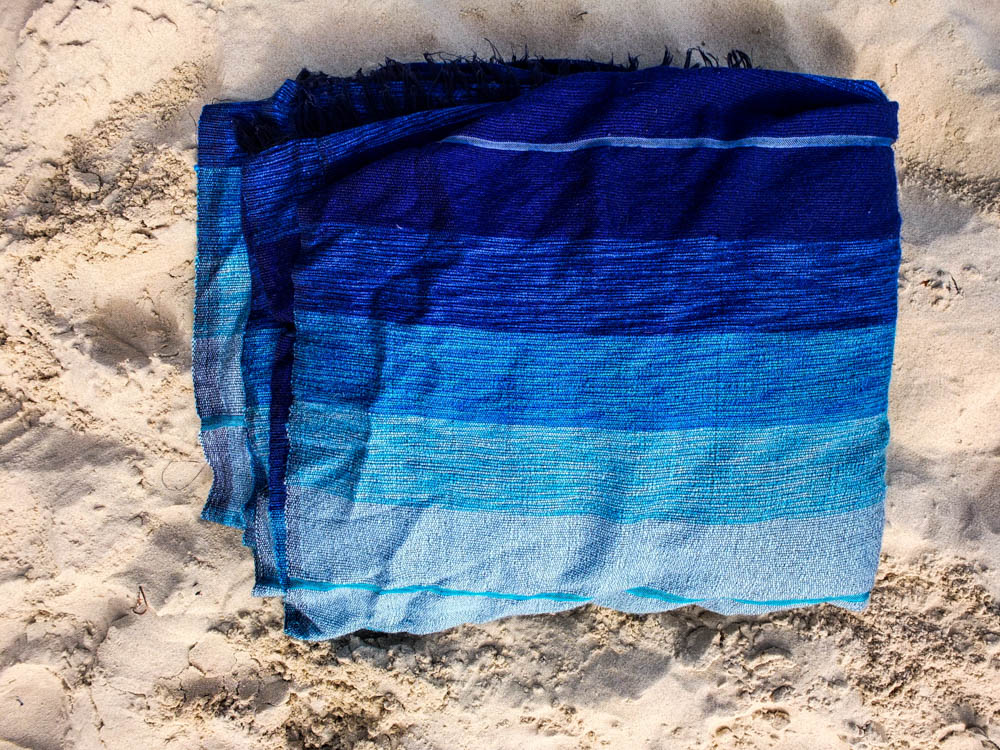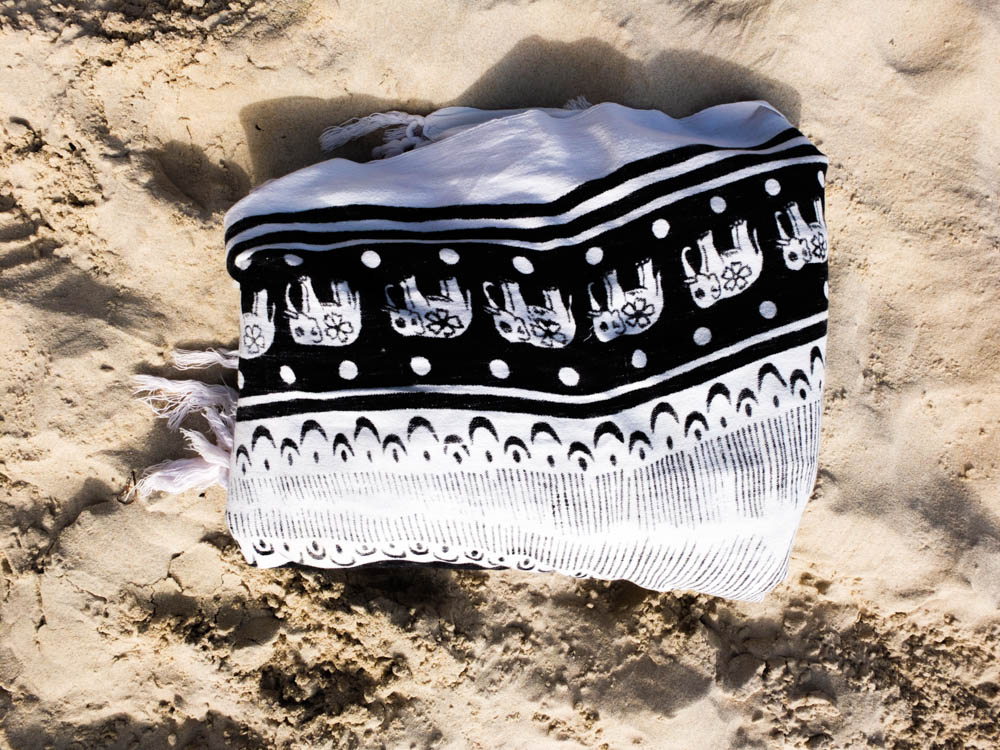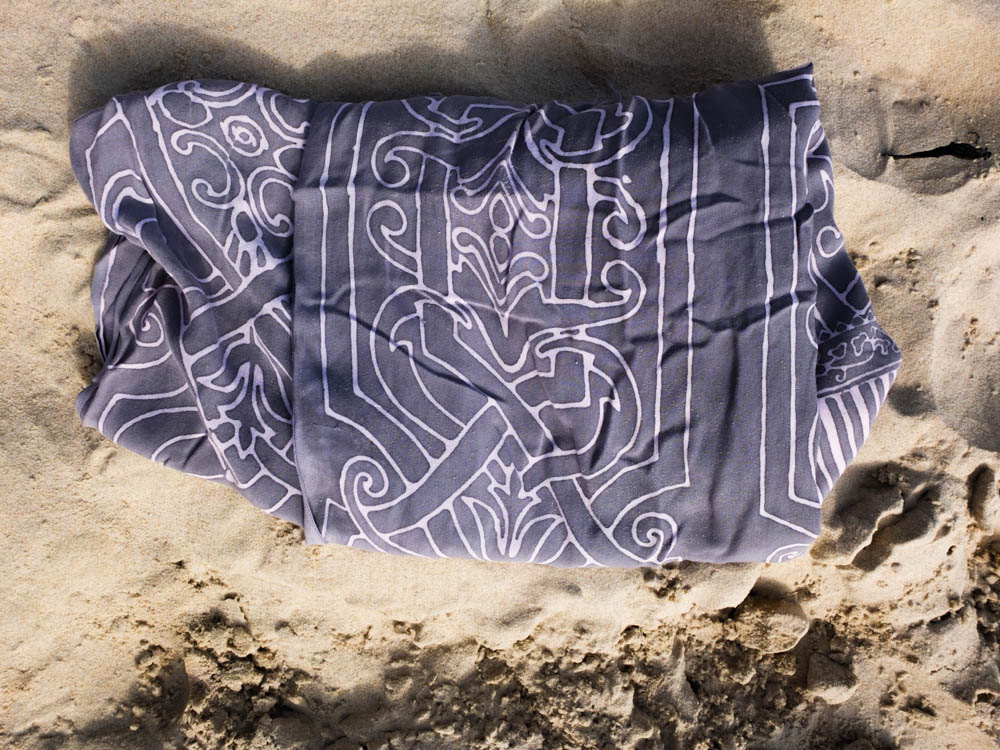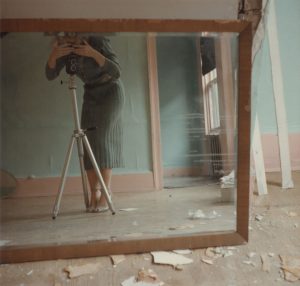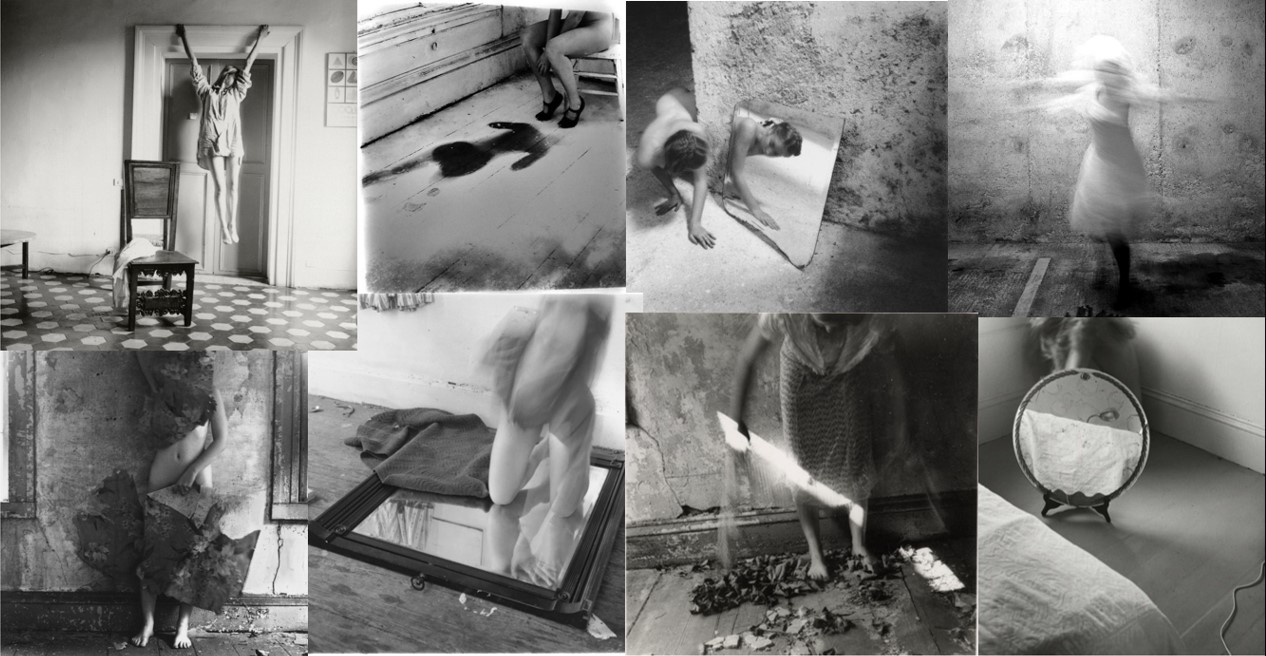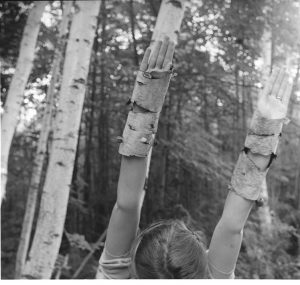This shoot turned out a lot better than i thought it would considering how specific the weather condidtons had to be to get good photographs. I managed to take the photgraphs on the perfect day when the sky was very cloudy and angry looking, when the sea was fairly high and had waves and there was very minimal wind to keep blowing the umbrellas away.
I composed my den to be in a position where i could capture it against the background of the sea and sky without any other man made objects. I also didn’t really want any stereotypical landmarks of areas of land in my photographs and for the majority of photographs i avoided this. I think my process photographs turned out to be the best ones so far. I think this is partly to do with how obvious it was once each umbrellas was added but also the landscape. For this den when you added every new element it was really clear exactly what umbrellas had been added and where. This is because they were all such bright colours and also the angle i photographed the den from meant that some umbrellas didn’t obstruct others which was the main problem i had in some of my other progress photographs. The environment itself also didn’t obstruct any elements of the den and actually really enhanced the clarity of the umbrellas. The environment was very minimal making the growing structure more obvious. There are also clear lines in the composition which makes a contrast between the curved forms of the umbrellas clearer. The colours are also very bleak and bland, with no bright light or colours to distract. Overall i really like the final images. I composed the photographs so that the umbrellas were to the left hand side of the frame using the rule of thirds. I also quite like how the dark clouds in the sky move from photograph to photograph so that you get more of an impression that time is passing as each umbrella is added.
I think what i have learnt from this shoot is how effective it is to have a minimal background to make the colours and structures of the den stand out. Also taking photographs from a lower angle works quite well as a perspective.
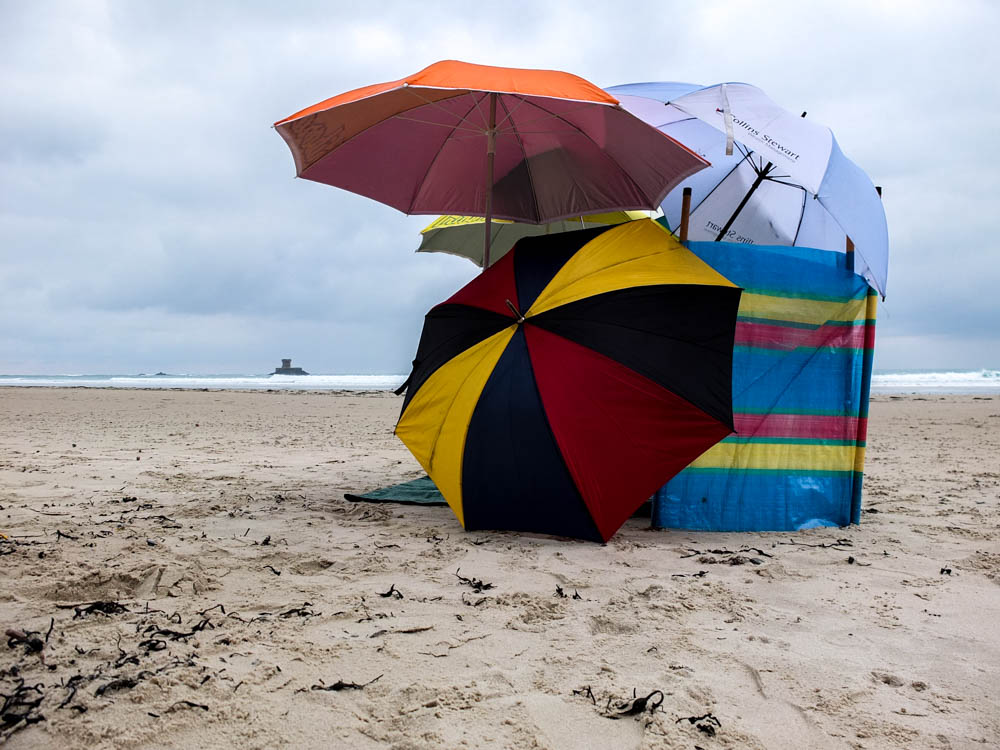
The above photograph is a closer up version of the den. I remembered how well it worked in my previous beach den to take some of the photographs from below as it reflected a childlike perspective and so i wanted to recreate that here. The light source in this image is in the top right hand corner as the brightest point of the image and this leads your eyes into the structure of the den as the den is composed slightly to the right of the frame. The light also shines directly onto the whitest coloured umbrella which causes it to stand out and also lead you into the other umbrellas. In this image there is a real contrast between the straight line of the horizon and the curves of the umbrellas. The wind break is also made up of straight lines but the umbrellas seem to envelop this within their curves and therefore it doesn’t create a very distinct contrast. The image as a whole isn’t particularly bright, the colours being the most vibrant part of the photograph.
The below image works quite well because of perspective. The angle i have composed the photograph from causes both the lines of the wall and also the lines the the sea to lead backwards into the den which is composed in the center of the frame. These leading lines make your eyes travel to the center point to see where they meet. This perspective of the den also gives an impression of the inside of the den and the shelter that it offers. Although the picture as a whole is fairly dark due to the clouds and therefore lack of bright light source you cans till see the shadows cast by the den which implies the shelter it offers. A problem with this image however is that with this composition it was impossible to include the angry looking sky. The sky which was so dynamic was mainly over the sea and to use the leading lines for this composition i couldn’t include it as well. I also while i do like the impression the leading lines gives, prefer the image with minimal other man made objects. I want the focus to be on the dead itself and while it still is i think the images work best when the environment is more minimal.

The below photograph once again reflects the process of den building. Some of the umbrellas would fall down or move slightly and another one would fall. Like with Goldsworthy’s practice the den building process involved a lot of rebuilding and re arranging as even though there was little wind there was enough to blow over the occasional umbrella. I composed the below image to have the den right in the center and therefore to emphasis the dens structure. This then emphasizes the imperfection of the umbrella which has rolled away. I should have though more about the composition of the den from this angle as at this angle you can see the most of the distracting elements in the background. There is La Rocco tower and the wall curving off into the background and once again no dynamic looking sky. The image does still work but i think it would have been more effective to once again have a more minimal background.


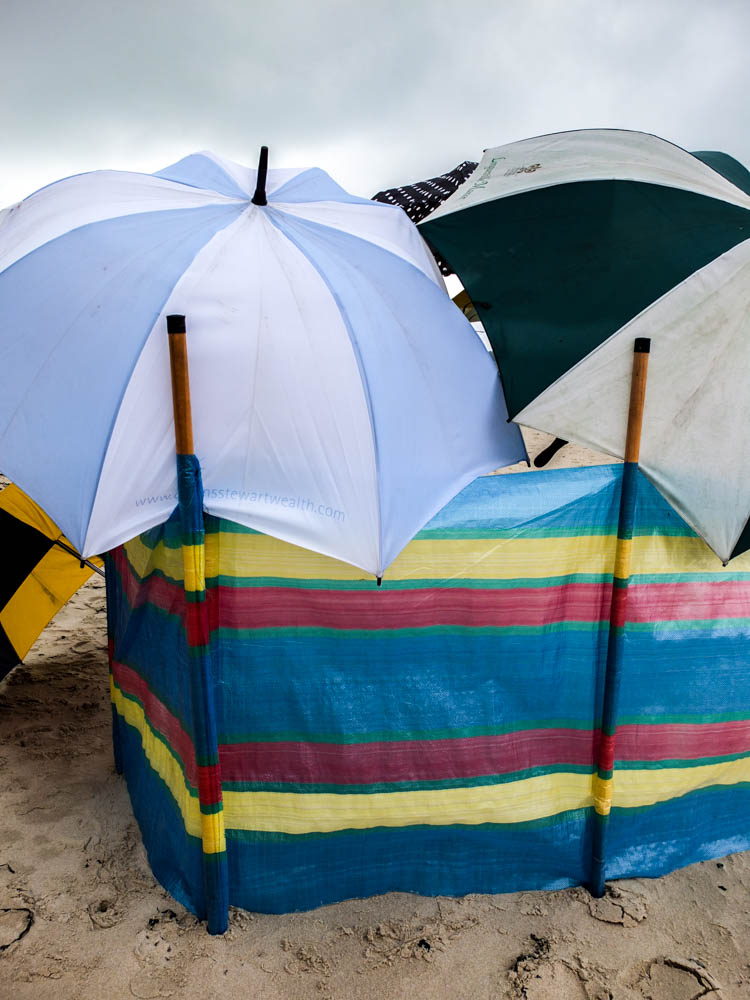
The above and below photographs are more abstract compositions of the dens in order to convey an impression of the process and structure. With the other dens i have taken some close up photographs which show exactly how the den stays together such as the blankets being tied ect. With this structure all the umbrellas were simply balanced on top of each other and so i needed to take some pictures which convey this. The above photograph shows how the umbrellas are leaning on the windbreak which is supporting them. The umbrellas themselves are then also slightly overlapped which shows how the umbrellas are also leaning on each other to stay up. This image once again also plays with curves and straight lines contrasting, The straight lines of the windbreak and the pattern on it contrasting with the curves of the umbrellas structure and pattern. The lines are composed to be in the center of the frame, the whole image fairly balanced with having one umbrella to each side of the pole. The rest of the environment is fairly minimal which works well, the sky could be slightly more dynamic as in having more other colours rather than just a smokey white but it doesn’t take away from the composition in being too distracting.
The below photograph plays on having the curves of the umbrellas and also the straight lines of the wall. Perspective also plays a big part in this image once again as the line of the wall receding into the distance shows the depth of the image. This image is fairly bright as the sky is very white, as is the wall and the brightest of all the umbrellas is included in the composition. The focus within the image is in the background, the front foreground being blurry slightly. I quite like the abstract composition of having the den only covering the left half of the frame and then being able to see the environment in the rest of the composition.
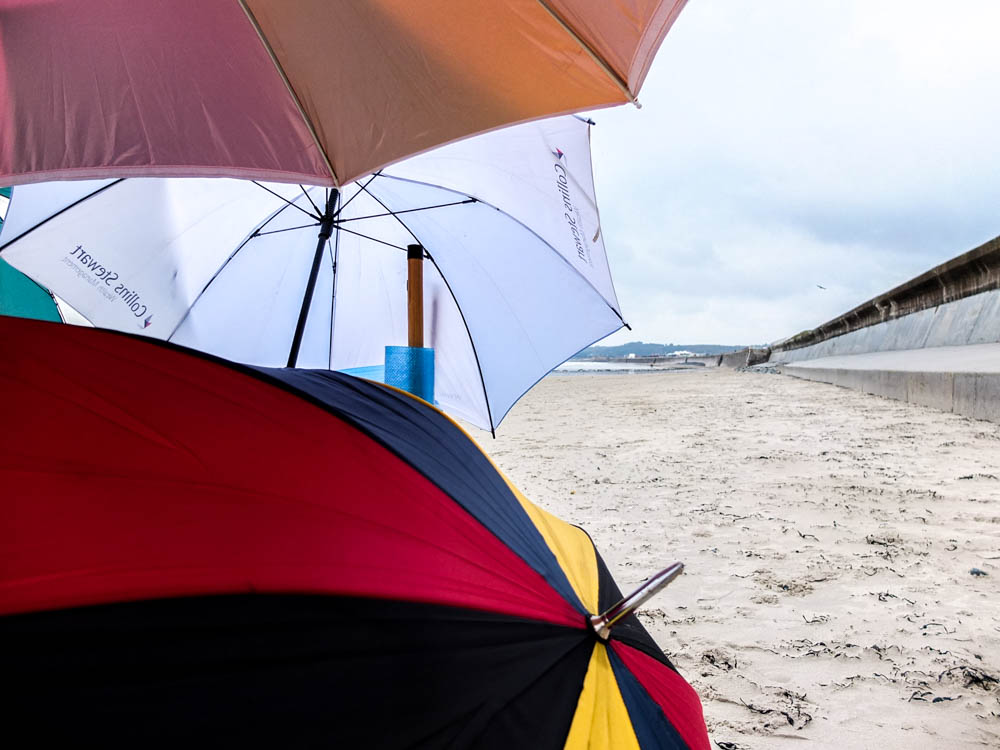
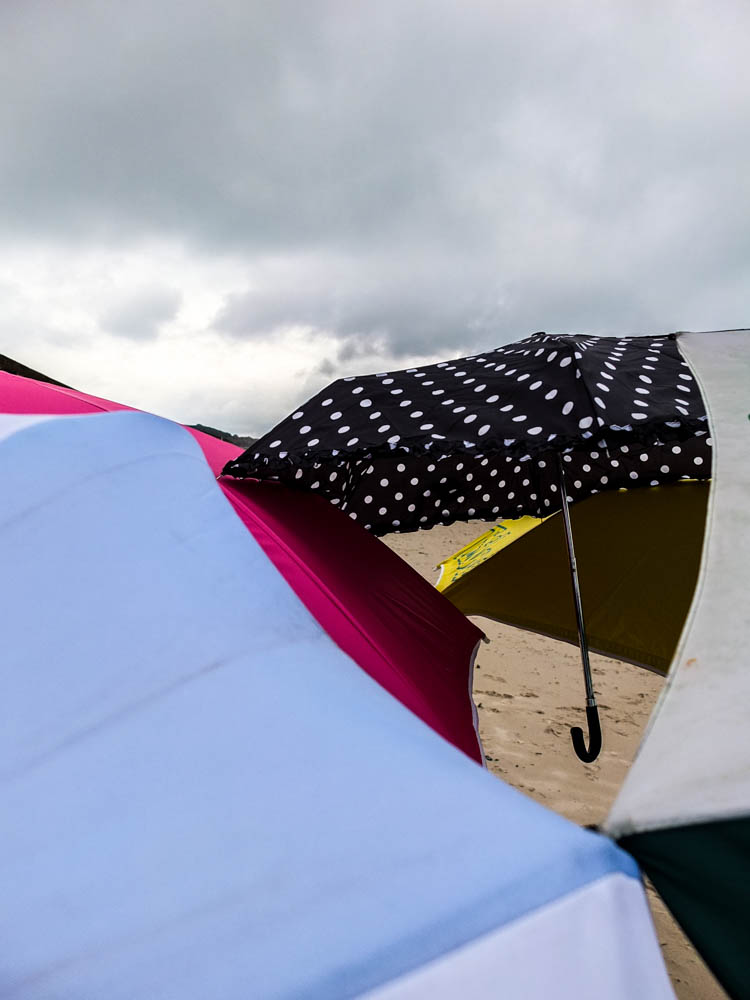
These photographs are also really abstract and convey even further how all the umbrellas are balanced on one another. The sky is fairly angry and i quite like the impression that the umbrellas of the den convey their own landscape. Like in some of the other photographs where the material becomes a part of the landscape i feel like that happens in these images too. The umbrellas come to look like hills of water in creating undulating forms. The different levels and different colours and shapes and sizes suggest that the object are not man made because there appears to be no pattern to them. You can however see the handle of the smallest umbrella which does convey exactly what the material is. In the above image the focus is in the background and actually on the smallest umbrellas, the foreground being blurred to an extent which conveys further how the umbrellas look as it they are apart of the landscape. The composition of the image below conveys even further this idea of the umbrellas becoming the landscape by having the umbrellas taking up the foreground and extending out into the background in various colours.
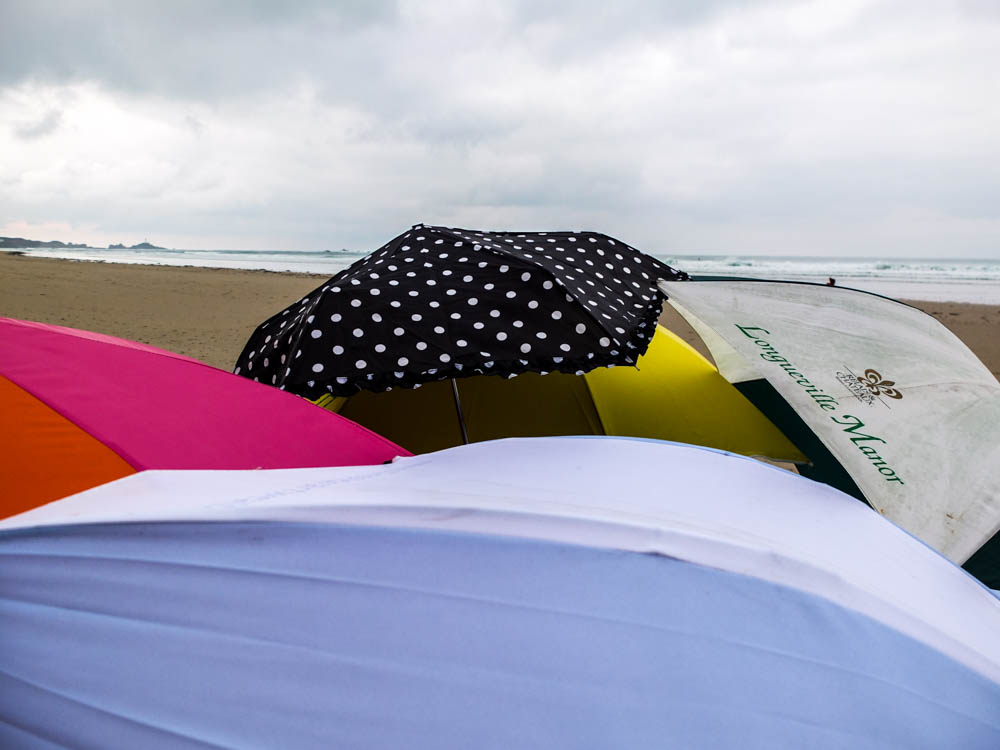
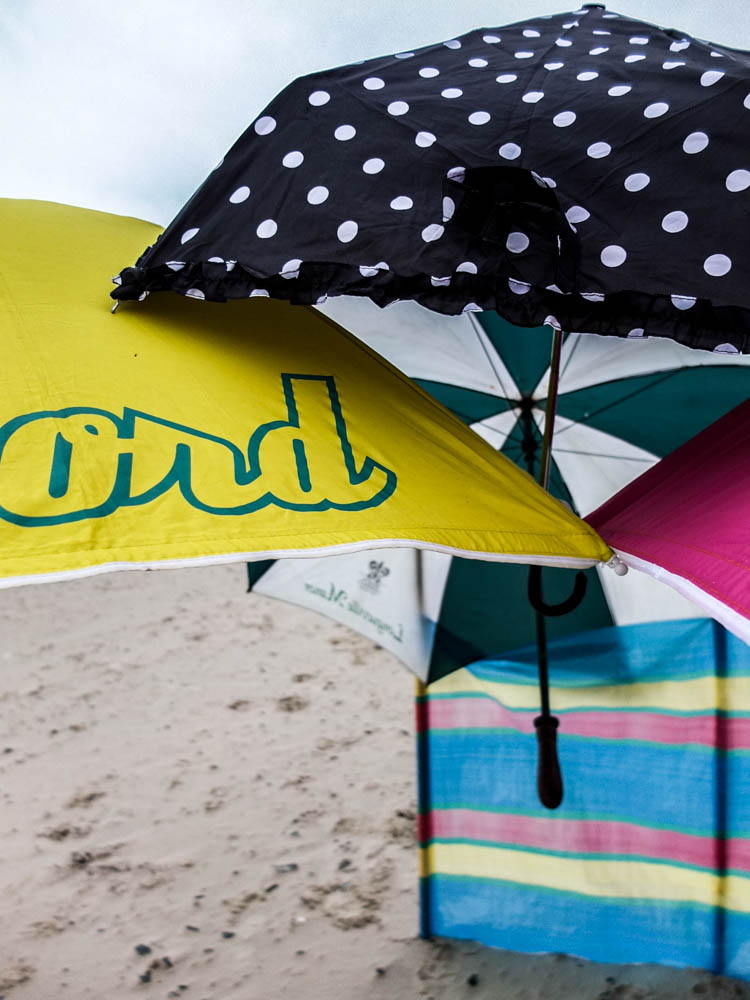
The above photograph i composed so that there was a narrow depth of field so the foreground was filled with clear umbrellas while the background was a blur. Only the immediate foreground of the umbrellas is in focus and then the windbreak and landscape of the beach is a blur. The minimal landscape can be seen in these photographs and works really well in conveying the contrasting colours of the umbrellas. This photograph probably shows the bright colours of the umbrellas best out of the photographs as i was photographing close enough to the umbrellas themselves to be able to show the colours without the lack of light from the environment effecting the colours and making them appear darker then they actually are. I quite like how in this composition the umbrellas fill the entire frame and almost slice right across the frame. There arrangement creates a triangle to the right hand side of the frame which acts like the rule of thirds to have the point at which all the umbrellas meet as a focal point.
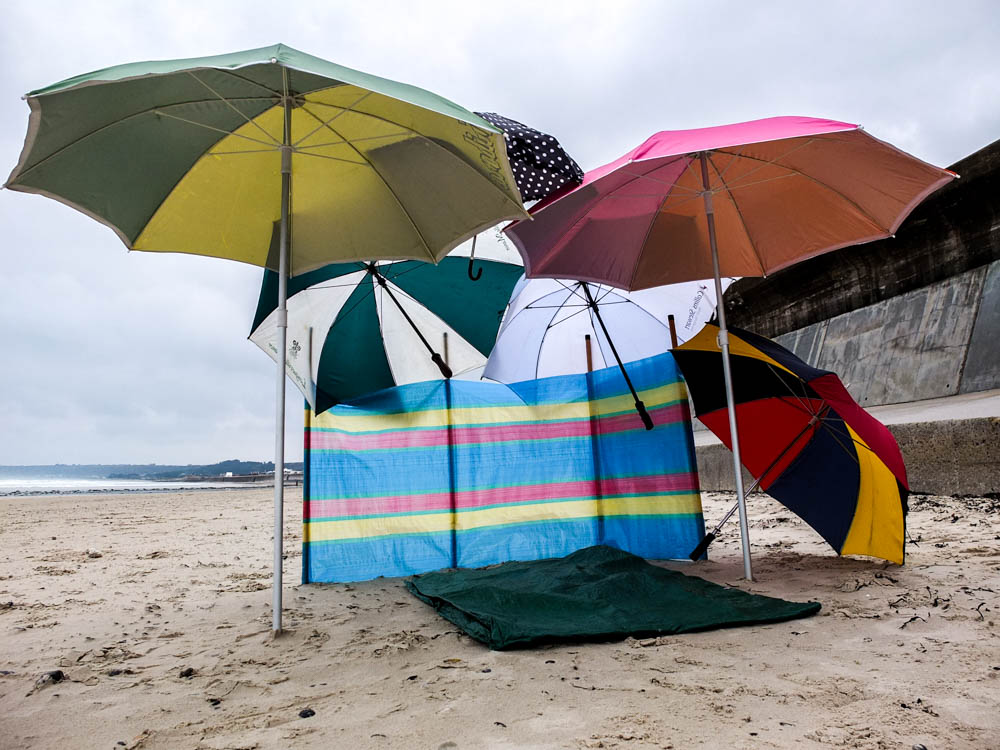
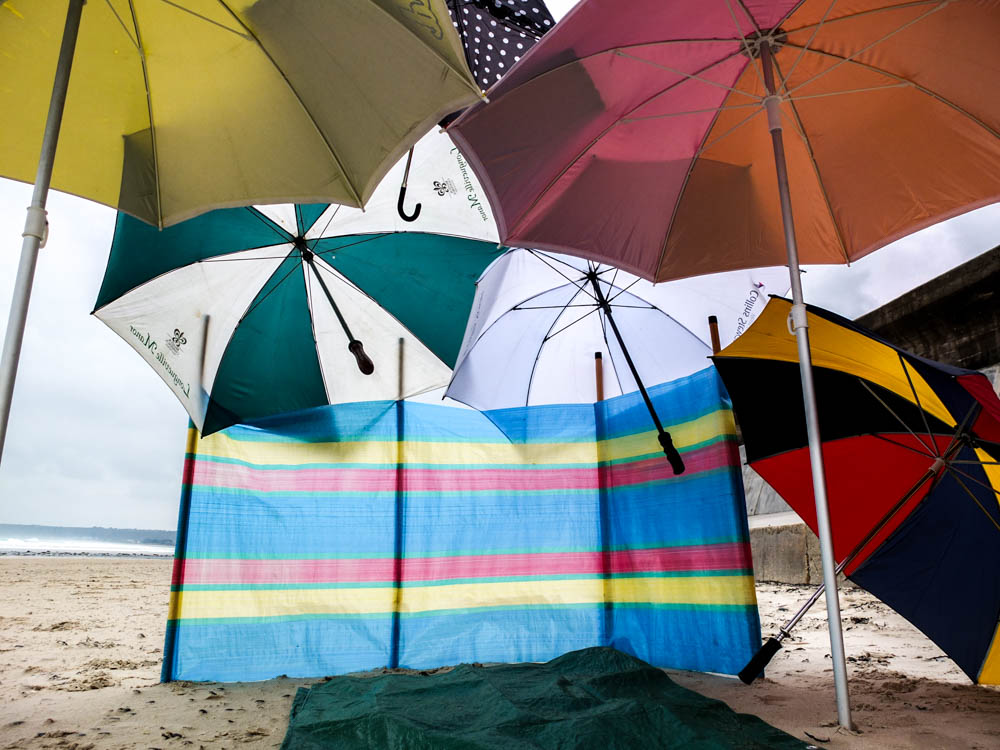
The above photograph is another one which conveys a child like perspective but this time focusing more on the inside of the den and more of a sense of crawling inside it. This photograph more than any of the others shows how the umbrellas become brighter and more transparent when you add light shining through them. The windbreak too had the light source behind it which causes the colours to become a lot brighter. This photograph defiantly has a contrast between the curves and straight lines of the image. From this angle you can see all the spurs of the umbrellas as well as the handles which are all straight lines and also the windbreaks straight lines. The umbrellas then act as curves which bring together the whole structure as they unite all the different elements . I really like the perspective of these images, having them taken from below looking up. When inside the den you are constantly looking up at the roof of the den when its raining to check for leaks in the structure and watch the rain hitting the top of the den.
Below are some more abstract images which explore the concept of looking up.

